Find out more about our cookie policy

Growth Events
Upcoming Events
Tech Tour Growth Health 2024
09 - 11 September 2024 Lausanne , Switzerland
Past Events
Tech Tour Growth Deeptech 2024
11 - 12 April 2024 Leuven , Belgium
Tech Tour Growth50 Europe 2024
08 February 2024 Paris , France
Test Event_0111
31 January 2024 Brussels , Belgium
China-EU Sustainability Summit
01 September - 05 December 2023 China
Tech Tour Growth Health 2023
19 - 21 June 2023 Lausanne , Switzerland
Tech Tour Growth Europe 2023
08 March 2023 Paris , France
Deep Tech 2022
09 - 10 November 2022 Leuven , Belgium
Tech Tour Growth & EIC ScalingUp 2022
28 February - 04 March 2022
Deep Tech 2021
Sep - December 2021 Online
Tech Tour Smart Capital 2020
September 2020 Copenhagen , Denmark
Tech Tour Health 2020
25 July - 18 December 2020
Deep Tech 2020
Jul - November 2020 London , United Kingdom
Tech Tour Growth 2020
26 - 27 March 2020 Geneva & Lausanne , Switzerland
Mobility Landing Programme – Verbier
05 - 06 December 2019 Verbier , Switzerland
Hydrogen Landing Programme
28 - 29 November 2019 Rotterdam , Netherlands
Tech Tour Energy Transition 2019
27 - 28 November 2019 Rotterdam , Netherlands
Smart Mobility Landing Programme Munich
14 - 15 November 2019 Munich , Germany
Tech Tour Mobility 2019
13 - 14 November 2019 Munich , Germany
Deep Tech Summit 2019
15 - 16 October 2019 London , United Kingdom
Healthtech Summit 2019
24 - 26 June 2019 Lausanne , Switzerland
South East Europe Tech Tour 2019
28 - 29 May 2019 Sofia , Bulgaria
Tech Tour 2019 Growth Summit
28 - 29 March 2019 Geneva & Lausanne , Switzerland
Cleantech Summit Energy Transition 2018
27 November 2018 Rotterdam , Netherlands
Pitch 4 SMEs 2018
22 November 2018 Vienna , Austria
Deep Tech Summit 2018
09 - 10 October 2018 London , United Kingdom
CSEM Industrial IoT Day Neuchâtel 2018
21 September 2018 Neuchâtel , Switzerland
Blockchain Unchained 2018
12 September 2018 Geneva , Switzerland
The Incredibles Acceleration Program 2018
31 August 2018
Healthtech Summit 2018
25 - 28 June 2018 Lausanne , Switzerland
Eastern Europe Tech Tour 2018
11 - 13 June 2018 Bulgaria , Poland
EU-China Cleantech Scale-up Delegation 2018
20 - 22 May 2018 Wuhan , China
EU-China Tech Scale-up Summit 2018
17 - 19 May 2018 Chengdu , China
IVC Roundtable Geneva 2018
22 March 2018 Geneva , Switzerland
Tech Tour 2018 Growth Summit
22 - 23 March 2018 Geneva & Lausanne , Switzerland
Cleantech Summit 2017
22 - 23 November 2017 Rotterdam , Netherlands
GoforIsrael 2017 Hong Kong
29 October 2017 Hong Kong , Hong Kong
Deep Tech Summit 2017
17 - 18 October 2017 London , United Kingdom
Italian Tech Tour 2017
11 - 12 September 2017 Rome , Italy
Healthtech Summit 2017
27 - 28 June 2017 Lausanne , Switzerland
E!nnoVest Venture Forum 2017
19 May 2017 Barcelona , Spain
Russian Tech Tour 2017
25 - 27 April 2017 Moscow & Kazan , Russian Federation
Tech Tour Growth Forum 2017
30 - 31 March 2017 Geneva & Lausanne , Switzerland
Tech Tour Growth Awards 2017
30 March 2017 Lausanne , Switzerland
European Venture Summit 2016
05 - 06 December 2016 Dusseldorf , Germany
Cleantech Summit 2016
23 - 24 November 2016 Rotterdam , Netherlands
Italian Tech Tour 2016
16 - 18 November 2016 Turin & Rome , Italy
HTS Healthtech Summit 2016
21 - 22 June 2016 Lausanne , Switzerland
Fintech Summit 2016
03 - 04 May 2016 Paris , France
Tech Tour Growth Forum 2016
17 - 18 March 2016 Geneva & Lausanne , Switzerland
Tech Tour Growth Awards 2016
17 March 2016 Geneva & Lausanne , Switzerland
Cleantech Summit 2015
18 - 19 November 2015 Rotterdam , Netherlands
Arabian Tech Tour 2015
02 - 03 November 2015 Jeddah , Saudi Arabia
HealthTech Growth Academy
28 - 29 October 2015 Aarhus , Denmark
Digital Tech Summit 2015
20 - 21 October 2015 Lisbon , Portugal
CTS Investment Readiness Programme 2015
12 October 2015 Delft , Netherlands
HTS HealthTech Summit 2015
30 June - 01 July 2015 Lausanne , Switzerland
Benelux Tech Tour 2015
19 - 21 May 2015 Brussels, Antwerp, Rotterdam , Belgium
Tech Tour Growth Awards 2015
19 March 2015 Geneva & Lausanne , Switzerland
TTGF Tech Tour Growth Forum 2015
19 - 20 March 2015 Geneva , Switzerland
Cleantech Summit Rotterdam 2014
20 - 21 November 2014 Rotterdam , Netherlands
GVF Global Venture Forum 2014
20 November 2014 Mountain View , United States
Iberian Tech Tour 2014
01 - 02 October 2014 Valencia & Lisbon , Portugal
Nordic Tech Tour 2014
03 - 04 June 2014 Helsinki / Stockholm , Sweden
DTS Digital Tech Summit 2014
23 - 24 April 2014 London , United Kingdom
CTS Clean Tech Summit 2013
12 - 13 November 2013 Milan , Italy
Entrepreneur of the Year Award 2013
24 September 2013 Berlin , Germany
TGS Tech Growth Summit 2013
23 - 24 September 2013 Berlin , Germany
Tech Tour UK & Ireland 2013
17 - 20 September 2013 UK Ireland , United Kingdom
HTS Health Tech Summit 2013
25 - 26 June 2013 London , United Kingdom
Tech Tour Russia 2013
23 - 26 April 2013 Moscow - Kazan , Russian Federation
TT Cloud & Big Data Summit 2012
21 - 22 November 2012 Lausanne , Switzerland
European Entrepreneur of the Year Award 2012
21 November 2012 Lausanne , Switzerland
Tech Tour Medtech Summit 2012
16 - 17 October 2012 Lausanne , Switzerland
Tech Tour Solutions 2012
27 September 2012 London , United Kingdom
French & Benelux Tech Tour 2012
09 - 11 May 2012 Paris/Eindhoven , France
Southern Europe Tech Tour 2011
30 November - 02 December 2011 Bilbao / Rome , Spain
Entrepreneur of the Year Award 2011
02 November 2011 London , United Kingdom
Cleantech Summit 2011
06 - 07 July 2011 Geneva , Switzerland
DACH Tech Tour 2011
25 - 27 May 2011 Berlin / Luzern / Zurich , Germany
Cloud & ICT Summit 2010
17 - 18 November 2010 Lausanne / Geneve , Switzerland
Innovation Xchange 2010
14 - 16 October 2010 Copenhagencity , Denmark
Entrepreneur of the Year Award 2010
14 October 2010 Copenhagen , Denmark
Tech Tour Medtech Summit 2010
29 - 30 September 2010 Lausanne , Switzerland
Nordic Tech Tour 2010
15 - 17 June 2010 Helsinkt / Tallin / Stockholm , Finland
UK & Ireland Tech Tour 2010
27 - 29 April 2010 London / Dublin , United Kingdom
AP Award Dinner 2009
19 November 2009 Geneva , Switzerland
Russian Tech Tour 2009
22 - 25 September 2009 Moscow / Kazam / Tomsk , Russian Federation
Danish & Southern Sweden Tech Tour 2009
25 - 27 August 2009 Copenhagen / Lund / Malmoe , Denmark
French Tech Tour 2009
01 - 03 July 2009 Paris / Strasbourg , France
Cleantech Summit 2009
17 - 18 June 2009 Geneba , Switzerland
Tech Tour AP Award Dinner 2008
20 November 2008 Montreux / Lausanne , Switzerland
Tech Tour Medtech Summit 2008
19 - 20 November 2008 Montreux / Lausanne , Switzerland
Tech Tour Semiconductor Summit 2008
04 - 05 November 2008 Montreux , Switzerland
Norwegian Tech Tour 2008
27 - 29 August 2008 Oslo / Tonsberg / Stavanger , Norway
European Growth Summit
07 June 2008 Barcelona , Spain
German Tech Tour 2008
04 - 06 June 2008 Munich / Berlin / Postdam , Germany
Tech Tour AP Award Dinner 2007
20 November 2007 Geneva , Switzerland
Tech Tour Web & Communities Summit 2007
14 - 15 November 2007 Montreux , Switzerland
English Tech Tour 2007
17 - 19 October 2007 London / Manchester , United Kingdom
Spanish Tech Tour 2007
23 - 25 May 2007 Madrid Valencia , Spain
Swiss Tech Tour 2007
07 - 09 March 2007 Zurich / Montreux / Geneva , Switzerland
Scottish Tech Tour 2006
06 - 08 December 2006 Stirling / Edinburgh / Glasgow , United Kingdom
Tech Tour AP Award Dinner 2006
30 November 2006 city , Switzerland
Tech Tour Semiconductor Summit 2006
24 - 25 October 2006 Brussels / Leuven , Belgium
Indian Tech Tour 2006
11 - 14 October 2006 Delhi / Bangalore / Mumbai , India
Benelux Tech Tour 2006
30 May - 01 June 2006 Amsterdam / Antwerp / Leuven , Belgium
French Tech Tour 2005
16 - 18 November 2005 Paris / marseille / Grenoble , France
Finnish Tech Tour 2005
31 August - 02 September 2005 Helsinki / Espoo / Oulu , Finland
Swedish Tech Tour 2005
01 - 03 May 2005 Stockholm / Kiruna / Norkoping , Sweden

German Tech Tour 2005
20 - 22 April 2005 Munich / Dresden , Germany
Irish Tech Tour 2004
10 - 12 November 2004 Dublin / Belfast , Ireland
Russian Tech Tour 2004
21 - 23 September 2004 Moscow/StPetersburg , Russian Federation
English Tech Tour 2004
30 June - 02 July 2004 London/Bristol/Cambridge , United Kingdom
Israeli Tech Tour 2004
28 - 30 March 2004 Jerusalem/TelAviv , Israel
Danish Tech Tour 2003
11 - 14 August 2003 Copenhagen/Jutland , Denmark
Italian Tech Tour 2003
18 - 20 June 2003 Milan/Venice , Italy
Swiss Tech Tour 2003
05 - 07 March 2003 Zurich/Neuchatel/Lausanne/Geneve , Switzerland
Norwegian Tech Tour 2002
28 - 30 August 2002 Oslo/Bergen , Norway
Dutch Tech Tour 2002
22 - 24 May 2002 Amsterdam , Netherlands
Scottish Tech Tour 2001
05 - 07 December 2001 Edinburgh/Glasgow , United Kingdom
French Tech Tour 2001
19 - 21 September 2001 Paris/Cannes , France
Spanish Tech Tour 2000
18 - 20 August 2000 Madrid/Barcelona , Spain
Finnish Tech Tour 2000
03 - 05 May 2000 Helsinki/Espoo , Finland
German Tech Tour 2000
16 - 18 February 2000 Munich/Berlin , Germany
Swedish Tech Tour 1999
31 August - 02 September 1999 Stockholm , Sweden
Irish Tech Tour 1999
12 - 14 May 1999 Dublin , Ireland
Swiss Tech Tour 1998
22 - 24 September 1998 Montreux , Switzerland
- Other Businesses

Tech Tour includes Hydrogenious LOHC Technologies in Tech Tour Growth50 List
Brussels, Belgium / Paris, France / Erlangen, Germany. Hydrogenious LOHC Technologies, the German pioneer in storing and transporting hydrogen in Liquid Organic Hydrogen Carriers (LOHC), has been named on the Tech Tour Growth 50. This prospect list of Europe’s future unicorns spotlights the European tech companies with the biggest growth potential.
By enabling safe storage and long-distance transport of hydrogen using the existing infrastructure for liquid fuels, Hydrogenious’ innovative LOHC technology plays a key role in the global energy transition and decarbonization of industries.
“This year’s Tech Tour Growth50 List is a clear indication of the strength and diversity of Europe’s tech sector. It showcases the innovation, ambitious spirit, and fantastic growing successes of Europe’s most promising tech companies,” said Daniel Kahn, President, Tech Tour Growth 50 Europe 2024 .
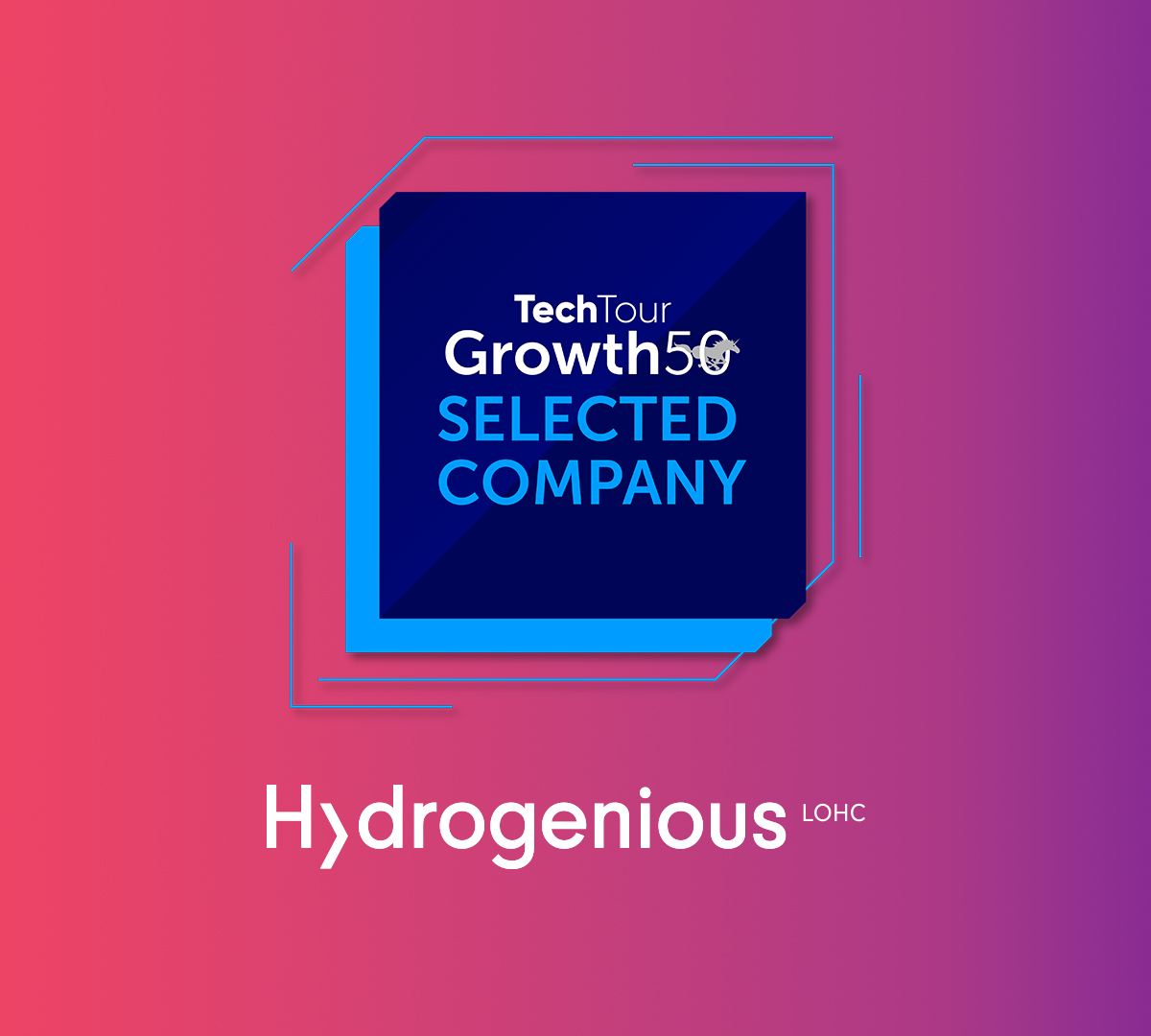
TechTour Growth50 Badge including Hydrogenious LOHC Technologies Logo
Share this news

- Investor News
- Research News

Plagazi Nominated as One of the 25 Most Promising Hydrogen Companies in Europe (TECH25) By Hydrogen Europe and Tech Tour
November 22, 2023 | 3 min read
- No Comments

Due to our promising developments, Plagazi has been nominated as one of the 25 most promising hydrogen production companies in Europe, and once again been invited to the European Hydrogen Week to participate and present our unique and sustainable approach to hydrogen production. The annual event, organized by Hydrogen Europe, selects and invites handpicked companies within the sustainability space to pitch and present in front of large groups of potential investors and other stakeholders, and is held in Brussels, Belgium.
Hydrogen Europe is a membership organisation that encompasses the entire value chain of the hydrogen ecosystem, from production to distribution to end uses. With over 510 members, they possess a vast network of industrial leaders, startups, regional entities, and national associations who all have hydrogen as their main focus or in their best interests. They also partner with a wide range of financial institutions to enable investment opportunities into growing companies who work towards the development of the hydrogen economy.
Tech Tour is an event and networking organisation with a multi-sector focus, the largest of which is the sustainability sector. They are an organisation which focuses more exclusively on financing and investment networking opportunities and events, and have connected companies and investors to enable €20.7 billion in investments over the past 7 years.
Due to our high growth potential as deemed by the selection committee, Plagazi has been specifically nominated to attend and present at the event in Brussels in front of potential investors and other hydrogen stakeholders on the 22 nd of November as one of the best 25 hydrogen tech companies as nominated and voted by the 25+ most active hydrogen investors, sovereign funds, corporates, VCs, PE/Infrastructure funds, and financial institutions.
“We are highly grateful for this nomination and looking forward to present at Tech Tour and Hydrogen Europe’s event in Brussels, taking the opportunity to showcase our technology and potential, as well as continue to work with other players in the hydrogen sector to continue to further the development of hydrogen as a key fuel of the future. Further familiarizing the industry with our process will help waste-to-hydrogen become a cornerstone in the hydrogen transition.” – Gustav Granberg, CEO Plagazi AB (publ)
For further information, please contact:
Gustav Granberg, CEO Plagazi AB (publ)
Email: [email protected]
Phone: +46 70 270 02 16
About Plagazi AB (publ)
Plagazi AB is a Swedish clean-tech company which is revolutionizing the production of green hydrogen. Plagazi helps society close the circular loop by transforming waste into green hydrogen through plasma gasification, contributing to resolve the significant global issue of non-recyclable waste, renewable energy sources and carbon emissions. With multiple active projects across Europe, the company aims to become the answer to the continents strive to reach its climate goals.
More Information:
www.plagazi.com |
Follow Plagazi on LinkedIn:
https://www.linkedin.com/company/plagazigreenhydrogrenfromwaste/
Read the most up to date Fuel Cell and Hydrogen Industry news at FuelCellsWorks
Previous Post Home of NFL Hall of Fame Also Home of the Global Leader in H2 Fuel Cell-Powered Buses
Next post buru energy updates on operations of its hydrogen and helium business, 2h resources, you may also like.

Ronn Inc. to Begin Discussions in Geneva About Its New Hyper-Hydrogen Vehicle to Be the Successor to Its Scorpion Hydrogen Hybrid
Reliably Sealed: Cathode Isolation Valve for Fuel Cell Systems

India Accelerates Green Hydrogen Initiative
Author FuelCellsWorks
- Community Guidelines
- Partnerships
- Acceptable Use Policy
- Privacy Policy
- Terms & Conditions
© 1999-2024 FuelCellsWorks.
A New Hydrogen Combustion Engine Is Legitimately Heating Up
Will it actually transform the future of driving?

- As automobile makers look for alternatives to gasoline, hydrogen combustion is starting to gain traction.
- The hydrogen combustion engine is said to have the same range as a gasoline-powered combustion engine with the same refilling time.
- We could start seeing additional real-life testing of the hydrogen combustion engine in vehicles as soon as next year.
The technology is virtually already in place for hydrogen combustion engines , and both the driving ranges and refilling times are similar to that of traditional gasoline-powered combustion engines.
Moving toward hydrogen combustion is a different approach than searching for a hydrogen fuel cell. In the combustion version, the engine burns hydrogen to produce power through combustion like a conventional engine, whereas fuel cells use a chemical process to convert hydrogen into electricity. The combustion strategy also takes up less physical space than a fuel cell system, and doesn’t require the many new systems that a fuel would need to convert hydrogen to electricity and power an electric motor.
The combustion process still needs a little help, however. Volvo plans to use a type of biodiesel as a pilot fuel to ignite the combustion chamber, causing an explosion that drives the pistons. The engines must manage the high temperatures of that hydrogen combustion, which may require a more intricate engine design, better fuel-injection technology, and more hydrogen-friendly materials.
Kia and Hyundai are working together on an engine that they may have ready for passenger cars in 2025, while Volvo plans to have on-road tests in trucks in 2026.
“Trucks where the traditional internal combustion engine remains but runs on hydrogen will have the same performance and reliability as our diesel trucks, but with the added benefit of very low CO 2 emissions,” Jan Hjelmgren, Volvo Trucks head of product management and quality, said in a statement. “They will be a valuable complement to our battery electric trucks.”
Detractors of the hydrogen combustion push say that the new fuel source doesn’t solve the pollution dilemma in automobiles, as the hydrogen technology still has an emission output. Volvo, however, states that by using the right renewable materials, they can get a hydrogen combustion engine to fall within the “ zero emission vehicle” category as set by European Union standards.
Tim Newcomb is a journalist based in the Pacific Northwest. He covers stadiums, sneakers, gear, infrastructure, and more for a variety of publications, including Popular Mechanics. His favorite interviews have included sit-downs with Roger Federer in Switzerland, Kobe Bryant in Los Angeles, and Tinker Hatfield in Portland.

.css-cuqpxl:before{padding-right:0.3125rem;content:'//';display:inline;} Green Tech .css-xtujxj:before{padding-left:0.3125rem;content:'//';display:inline;}

Tungsten Tokamak Breaks Another Fusion Record

Here’s How We Could Live in Trees

You Can Give Your Body Back to Nature When You Die

This Giant Sand Battery Could Revolutionize Energy
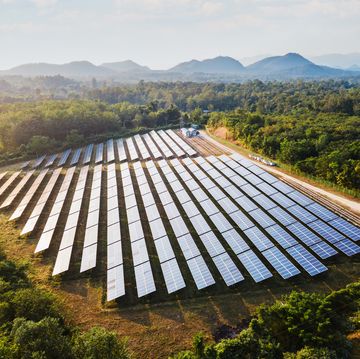
We’re Officially in the Age of Solar Power

These Microbes Could Transform CO2 Into Stone

New Kind of Cremation Could Make Death Sustainable

A Fusion Reaction Generated 2x the Energy It Used

Mycelium Mix May Revolutionize Building
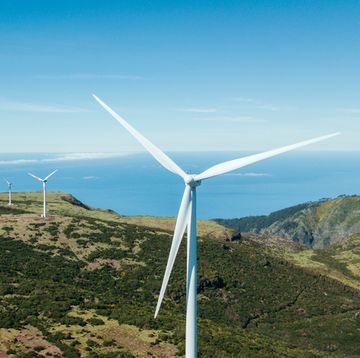
Portugal Ran on Renewable Energy For Nearly a Week
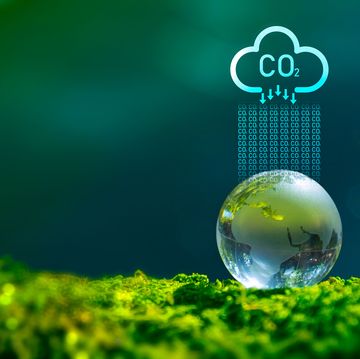
The U.S. Can Now Remove CO2 From The Air
- Today's news
- Reviews and deals
- Climate change
- 2024 election
- Fall allergies
- Health news
- Mental health
- Sexual health
- Family health
- So mini ways
- Unapologetically
- Buying guides
Entertainment
- How to Watch
- My Portfolio
- Latest News
- Stock Market
- Premium News
- Biden Economy
- Stocks: Most Actives
- Stocks: Gainers
- Stocks: Losers
- Trending Tickers
- World Indices
- US Treasury Bonds
- Top Mutual Funds
- Highest Open Interest
- Highest Implied Volatility
- Stock Comparison
- Advanced Charts
- Currency Converter
- Investment Ideas
- Research Reports
- Basic Materials
- Communication Services
- Consumer Cyclical
- Consumer Defensive
- Financial Services
- Industrials
- Real Estate
- Mutual Funds
- Analyst Rating
- Technical Events
- Smart Money
- Top Holdings
- Credit Cards
- Balance Transfer Cards
- Cash-back Cards
- Rewards Cards
- Travel Cards
- Student Loans
- Personal Loans
- Car Insurance
- Mortgage Calculator
- Morning Brief
- Market Domination
- Market Domination Overtime
- Asking for a Trend
- Opening Bid
- Stocks in Translation
- Lead This Way
- Good Buy or Goodbye?
- Fantasy football
- Pro Pick 'Em
- College Pick 'Em
- Fantasy baseball
- Fantasy hockey
- Fantasy basketball
- Download the app
- Daily fantasy
- Scores and schedules
- GameChannel
- World Baseball Classic
- Premier League
- CONCACAF League
- Champions League
- Motorsports
- Horse racing
- Newsletters
New on Yahoo
- Privacy Dashboard
Yahoo Finance
Yara opens renewable hydrogen plant: “a major milestone”.
Yara's CEO and President, Svein Tore Holsether and Norwegian Prime Minister, Jonas Gahr Støre
Official tour of the newly opened renewable hydrogen plant
Yara's hydrogen treatment plant
Yara's renewable hydrogen plant interior
Yara's renewable hydrogen plant exterior
Electrolyser stacks
Main heat exchanger
Oxygen water separator
Main circulation pumps
Today, Yara International is officially opening its renewable hydrogen plant at Herøya, Norway. Yara is now producing renewable hydrogen and ammonia and has already delivered the first tonnes of fertilizers made from renewable ammonia produced at this plant. "This is a major milestone for Yara and for the decarbonization of the food value chain, shipping fuel and other energy intensive industries," says Svein Tore Holsether, President & CEO of Yara.
The Norwegian Prime Minister Mr. Jonas Gahr Støre today inaugurated the 24 MW renewable hydrogen plant at Herøya Industrial Park, the largest of its kind currently in operation in Europe. The hydrogen is produced with electrolysis of water and renewable energy, replacing natural gas as feedstock and annually cutting 41,000 tonnes of CO2 emissions from the site.
"This is a ground-breaking project and a testament to our mission to responsibly feed the world and protect the planet. I want to thank our dedicated employees who have worked tirelessly to get this cutting-edge production up and running, Enova for supporting the project, our partners and our brave customers who are first movers towards a more sustainable future. We are very pleased to have delivered the first tonnes of low-carbon footprint fertilizers to Lantmännen, a partnership which serves as a concrete example of how collaboration across the entire food value chain is required to decarbonize. Together, we have made this important step towards decarbonizing hard to abate sectors," says Holsether.
The low-carbon footprint fertilizers produced and delivered will be part of a new portfolio called Yara Climate Choice. These solutions will benefit crops while at the same time contributing to decarbonizing the food value chain and reducing climate impact. In addition to fertilizers produced with electrolysis of water and renewable energy, fertilizers based on low-carbon ammonia produced using carbon capture storage (CCS) will be a large part of Yara’s portfolio going forward.
"Renewable ammonia is an important part of the decarbonization puzzle, however developing it at scale takes time. As the world is rapidly approaching 2030, we are also working to produce low-carbon ammonia with CCS to enable the hydrogen economy and develop the emerging markets for low-emission ammonia," says Hans Olav Raen, CEO of Yara Clean Ammonia.
In 2023, Yara signed a binding CO2 transport and storage agreement with Northern Lights, the world’s first cross-border CCS agreement in operation. Yara aims to reduce its annual CO2-emissions by 800,000 tons from the ammonia production at Yara Sluiskil . Yara is also evaluating one to two world-scale low-carbon ammonia production projects with CCS in the US.
"The world needs to act urgently on multiple fronts to reach the goals of the Paris Agreement, and CCS is a critical steppingstone to decarbonize rapidly and profitably. The green transition will require investments, predictable framework conditions, massive build-out of renewable energy and grid, continuously advancing technology, and a maturing market where demand and supply are developed simultaneously. The companies who take this seriously will have a competitive advantage. At Yara, we have already reduced our emissions by 45 percent since 2005, and with our strategy to profitably deliver decarbonized solutions quickly and at scale, produced with both renewable energy and CCS, we are uniquely positioned to deliver, both to shareholders, customers, employees and society at large," says Holsether.
Hydrogen is used to produce ammonia, which in turn is used to produce fertilizers and can also be used as shipping fuel. Ammonia is also an efficient energy- and hydrogen carrier.
About Yara International
Yara's mission is to responsibly feed the world and protect the planet. We pursue a strategy of sustainable value growth through reducing emissions from crop nutrition production and developing low-emission energy solutions. Yara's ambition is focused on growing a nature-positive food future that creates value for our customers, shareholders and society at large and delivers a more sustainable food value chain.
To drive the green transition in fertilizer production, shipping, and other energy-intensive industries, Yara will produce ammonia with significantly lower emissions. We provide digital tools for precision farming and work closely with partners at all levels of the food value chain to share knowledge and promote more efficient and sustainable solutions.
Founded in 1905 to solve the emerging famine in Europe, Yara has established a unique position as the industry's only global crop nutrition company. With 18,000 employees and operations in more than 60 countries, sustainability is an integral part of our business model. In 2023, Yara reported revenues of USD 15.5 billion.
About Yara Clean Ammonia
Yara Clean Ammonia is uniquely positioned to enable the hydrogen economy in a market expected to grow substantially over the next decades. We aim at significantly strengthening our leading global position as the world’s largest ammonia distributor, unlocking the green and blue value chains, and driving the development of clean ammonia globally.
Building on Yara’s leading experience within global ammonia production, logistics and trade, Yara Clean Ammonia works towards capturing growth opportunities in low-emission fuel for shipping, power generation, low-carbon food production and ammonia for industrial applications.
Yara Clean Ammonia operates the largest global ammonia network with 15 ships and has, through Yara, access to 18 ammonia terminals and multiple ammonia production and consumption sites across the world. Revenues and EBITDA for the FY 2023 were USD 1,9 billion and USD 101 million respectively. Yara Clean Ammonia is headquartered in Oslo, Norway.
Media contacts:
Tonje Næss Head of External Communications Yara International E-mail: [email protected] Mobile: + 47 408 44 647
Hilde Steinfeld Communication Director Yara Clean Ammonia E-mail: [email protected] Mobile: + 47 993 53 030
Attachments
Recommended Stories
Can nuscale help the world solve this gigantic energy problem.
NuScale is preparing to build its first small-scale nuclear reactors, with the goal of meeting a major clean energy need.
TechnipFMC (FTI), Sulzer Team Up on CO2 Pumps for Petrobras
TechnipFMC (FTI) and Sulzer develop subsea CO2 pumps for Petrobras, enhancing energy efficiency and reducing emissions in Brazilian oil fields.
US solar producers could finally have a fighting chance as tariffs kick in on cheaper imports from Asia
A two-year moratorium on solar tariff imports is over, and could help bring stability to strained US producers, analysts told BI.
India’s Climate Dilemma Will Hang Over Modi’s Next Five Years
(Bloomberg) -- Prime Minister Narendra Modi, heading into his third term with a weakened mandate, wants India to embrace a new “green era” at the forefront of climate diplomacy and clean technology.Most Read from BloombergRussia Is Sending Young Africans to Die in Its War Against UkraineMacron and Scholz Get Trounced by Far Right in EU ElectionsPutin Is Running Out of Time to Achieve Breakthrough in UkraineMacron Gambles on Snap French Election in Bid to Stop Le PenScholz’s SPD Suffers Record Ro
Week in review: Is recycling back in fashion?
As Renewcell finds a buyer and MAS Holdings pledges to buy recycled polyester from Ambercycle, are we about to see a resurgence of fashion recycling initiatives?
Rebuilding Gaza: the carbon cost of war
In the first 120 days since 7 October, more than 156,000 buildings were damaged in Gaza, requiring around 53 million tonnes of carbon dioxide equivalent (mtCO₂e) to rebuild.
New Zealand to lift oil drilling ban amid blackout fears in blow to Starmer
New Zealand was on Saturday night expected to revoke a ban on drilling for oil and gas amid fears of blackouts, as Labour plans to impose a similar crackdown on the North Sea.
Analysts reset Nvidia stock price targets amid split, Dow entry talk
Nvidia shares will begin trading on a split-adjusted basis Monday, but remain the world's third most-valuable stock.
Eli Lilly Rises Again, As FDA Panel Mulls Biogen-Rivaling Alzheimer's Drug
Eli Lilly stock inched ahead Monday as a panel of advisors to the FDA gathered to discuss its experimental Alzheimer's treatment, donanemab.
JPMorgan warns of a shock to stock market's calm from CPI, Fed
(Bloomberg) -- Wall Street’s most prominent trading desks from JPMorgan Chase & Co. to Citigroup Inc. are urging investors prepare for a stock market jolt this week after the latest inflation print and the Federal Reserve’s interest-rate decision, both of which arrive on Wednesday. Most Read from BloombergRussia Is Sending Young Africans to Die in Its War Against UkraineMacron and Scholz Get Trounced by Far Right in EU ElectionsMacron Gambles on Snap French Election in Bid to Stop Le PenPutin Is

- June 9, 2024 | Researchers Uncover Significant Cognitive Differences Between Male and Female Brains
- June 9, 2024 | Mayo Clinic Study Reveals Startling Connection Between Energy Drinks and Sudden Cardiac Arrest
- June 9, 2024 | Quantum Theory Unveils Surprising Black Hole Shortage
- June 9, 2024 | Cracking the Code: Scientists Solve Reynolds’ Century-Old Fluid Flow Mystery
- June 9, 2024 | A Sustainable Solution to Fighting Global Warming – New Catalyst Efficiently Converts CO2 to Natural Gas
Science Simplified: What Is Hydrogen Energy?
By Argonne National Laboratory April 6, 2024
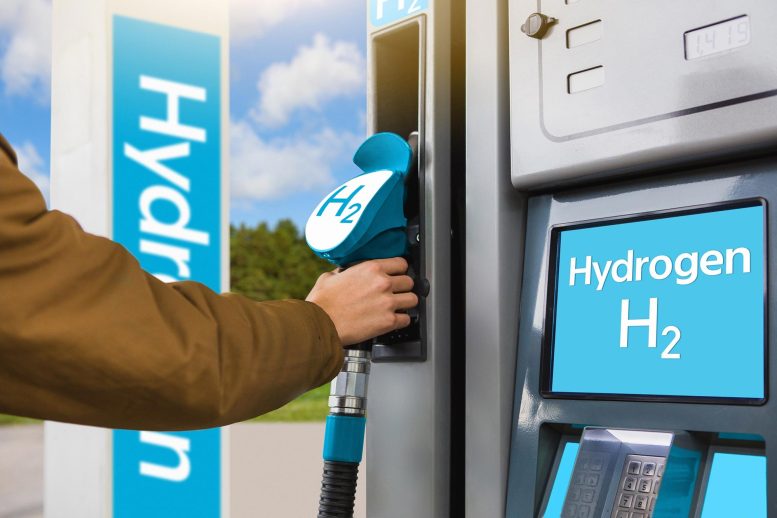
Scientists are exploring hydrogen as a clean energy source to combat climate change, focusing on its production through water electrolysis and use in fuel cells for transportation, aligning with the goal of net-zero carbon emissions by 2050.
What Is Hydrogen Energy?
As the effects of climate change take hold, our planet faces record heat waves, unprecedented storms, historic droughts, and wildfires. Scientists have linked these events to greenhouse gases like carbon dioxide in the atmosphere, much of which is produced by human activity.
But what if, instead of releasing harmful greenhouse gases into the environment, our airplanes and cars could run on fuel produced from water, using electricity from the sun or wind? What if this renewable fuel could provide backup power to the electric grid and be purchased from fueling stations across the nation?
Scientists are working to make this vision a reality using the energy within hydrogen, which promises to play a major role in fostering a cleaner environment and achieving the U.S. goal to attain net-zero carbon emissions by 2050 — in other words, removing carbon from the atmosphere at the same rate it is emitted.
Hydrogen is the simplest chemical element, or type of atom. It consists of just one proton and one electron. It is also the most abundant element, making up around 75% of the known matter in the universe. Vast amounts of hydrogen exist in water and living things.
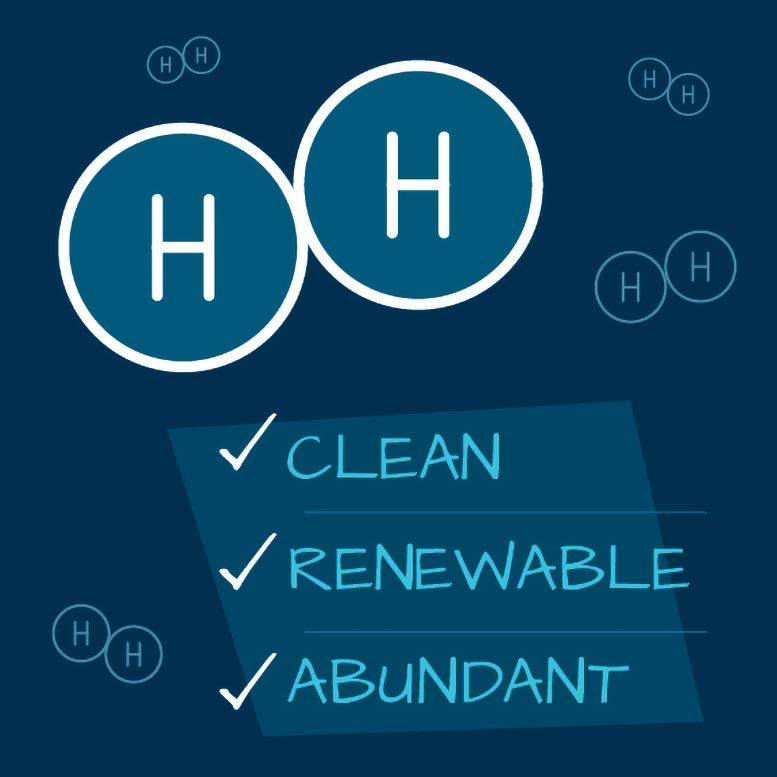
An abundance of hydrogen exists within the water on our planet, and it is naturally renewed by the water cycle. When used as fuel, it releases no carbon emissions, making it a promising clean energy source. Credit: Argonne National Laboratory
The hydrogen molecule, consisting of two hydrogen atoms, can be used to produce carbon-free energy. Hydrogen molecules carry a lot of energy; a pound of hydrogen contains almost three times the energy of a pound of gasoline or diesel.
However, hydrogen molecules are not abundant on Earth, making up less than 0.0001% of our atmosphere. Because of this, hydrogen must be produced from other substances that contain it. The most common way to produce hydrogen that doesn’t use fossil fuels is to split water (H 2 O) into hydrogen (H 2 ) and oxygen (O 2 ) using electricity. This process, called water electrolysis, is a promising option for carbon-free hydrogen production since the electricity can be sourced from nuclear or renewable energy, such as wind and solar. Scientists and engineers are working to improve and lower the cost of hydrogen produced by water electrolysis.
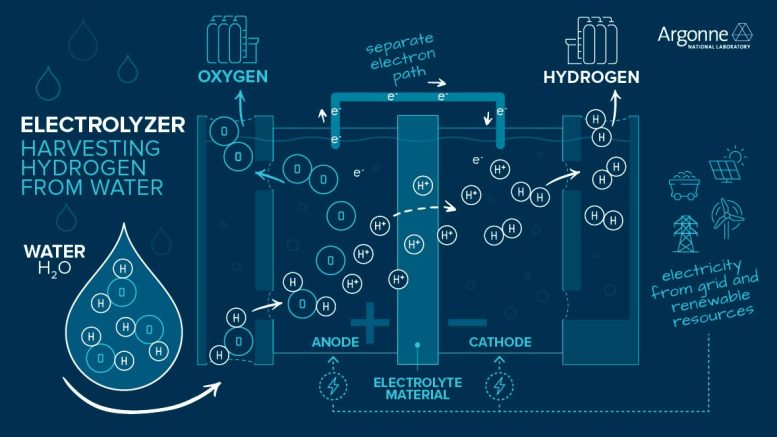
In electrolysis, water splits at the anode to form oxygen, hydrogen ions, and electrons. An electrolyte material allows hydrogen ions through, but forces electrons to flow separately to the cathode, where the two recombine to form hydrogen gas for use as fuel. Credit: Argonne National Laboratory
They are also developing methods that convert solar energy and water directly to hydrogen by harnessing and mimicking biological processes like photosynthesis .
There are several ways to use hydrogen for energy once it is produced. The most prominent is in fuel cells, which convert the chemical energy stored in hydrogen and oxygen into electricity. Unlike with gasoline-fueled engines, there are no harmful emissions like carbon dioxide. And unlike with batteries, fuel cell systems don’t require lengthy downtimes for recharging. They are refueled like gasoline-fueled engines, but with hydrogen.
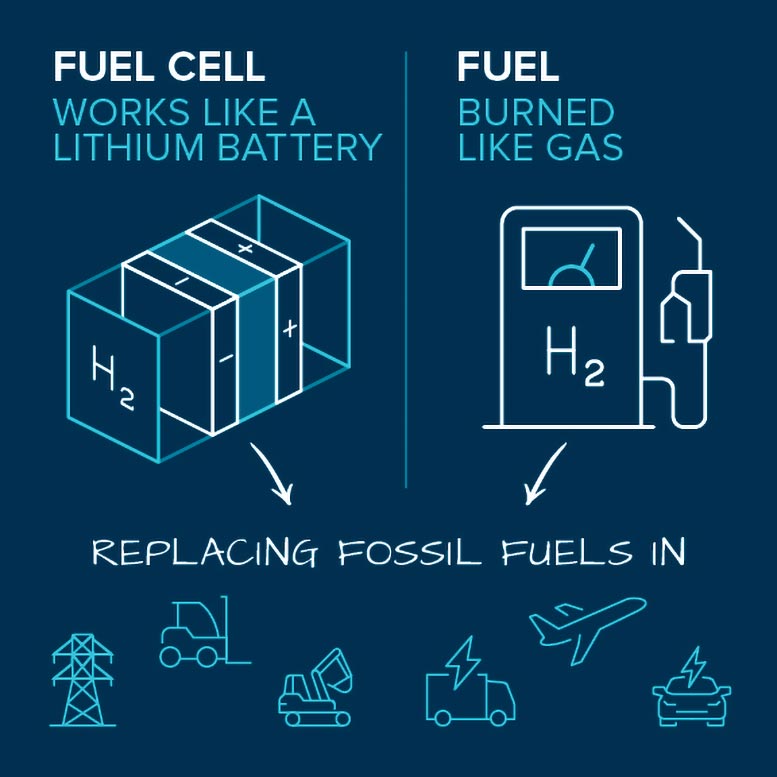
Hydrogen can be used in fuel cells or burned as fuel in engines. Scientists and engineers are working to improve these technologies, which could replace the use of fossil fuels in transportation and the grid. Credit: Argonne National Laboratory
A type of hydrogen fuel cell being developed for cars, trucks, forklifts, buses, ships, and trains splits hydrogen molecules into electrons and protons. The electrons are forced to flow through an electric circuit, creating a supply of usable electricity. Meanwhile, the protons are able to pass through a membrane, ultimately recombining with the electrons and reacting with oxygen molecules from the air to produce water, the only emission.
Scientists at the U.S. Department of Energy’s Argonne National Laboratory are leveraging world-class facilities and expertise to advance hydrogen science and technology. Our researchers are lowering the cost of hydrogen production, developing affordable fuel cells for hydrogen-powered vehicles. They’re also assessing methods of hydrogen production, transport, use, and storage to minimize greenhouse gas emissions.
More on SciTechDaily

The Most Breathtaking Celestial Vision You’ll Never See

What You Eat Affects Tumors: Diet May Slow Cancer Growth

Evolutionary Fuel: How an Ancient Chromosomal Inversion Could Foster Survival

Stanford’s Revolutionary Universal Memory: The Dawn of a Fast, Ultra-Efficient Memory Matrix

Low Levels of Air Pollution Linked to Premature Death

New Study Indicates That Socializing Could Extend Your Lifespan
“very surprised” – nasa’s exoplanet-hunting mission catches an explosive comet outburst.

Becoming Human: What Ancient DNA Tells Us About Who We Are
5 comments on "science simplified: what is hydrogen energy".
This article obfuscates like an advertisement; electrolysis takes energy, probably from burning coal or natural gas. Let me simplify it more. Using electricity, you can split H2O water into 2 hydrogen H and an oxygen O. If you add the oxygen back to make H2O, you get most of that energy back and released (think Hinderburg blimp exploding), and can move a car with it, and only water comes out as exhaust. There’s other ways of doing it, like a fuel cell getting electricity back out, but same basic idea. It’s like a rechargeable battery, using electricity to turn a chemical into another chemical, and then the reaction of turning it back releases most of the energy. You still lose energy at every step, but the advantage of hydrogen is you get way more energy from a jug of hydrogen than a jug of rechargable batteries. The main challenge, apart from getting the electricity to start with, is it needs a very special jug, or again, Hindenburg explosion. It makes more sense if you think of hydrogen as energy storage instead of a fuel or “clean energy source”, as making it takes more energy than you get out of it. Even our best batteries have terrible energy density, so hydrogen is a better obvious clean simple answer. There are new ways of making hydrogen coming, but of course, if you’re burning fossil fuels to make the hydrogen, it’s way more efficient to skip all the hydrogen steps and just burn the fossil fuel. I like hydrogen energy, but we have to be realistic.
” …, and when used as fuel, it releases no harmful emissions.”
Not so! Water vapor is a more powerful greenhouse gas than carbon dioxide. However, water vapor is usually ignored because it condenses out quickly (rain/snow) and is therefore,relatively constant in concentration. However, it is also a byproduct of the use of fossil fuels. With a ‘hydrogen economy,’ that is ALL that is produced, replacing the CO2 from fossil fuel combustion. The article doesn’t address how the waste water will be handled. If, as is the case with exhaust from internal combustion engines (ICE), it is released to the air, then the relative humidity will be increased, at least in cities, leading to local and regional warming. It will also result in increasing the heat index, increasing the demand for air conditioning and electricity. It will probably result in increasing the growth of mold on buildings and other structures, and increase the rate of rusting of exposed steel. If, in the Winter, it condenses onto the roads and freezes, it will make them slippery and increase the number and severity of accidents. If the water vapor from fuel cells or ICE vehicles is first condensed onboard before being released to drip on the roads, it will be worse than exhausting the vapor. Even wet roads in the Summer will increase braking distance, leading to more accidents. Low-level fog may become more common, impeding visibility, again resulting in increased accidents.
One solution to the problems outlined above is to retain the water onboard, and periodically drain it. However, that means the weight of the vehicle will continually increase between drainings, reducing the fuel economy. Increasing the weight will increase the braking distance and increase brake-lining wear, tire wear, and pavement damage. I don’t imaging that drivers will be thrilled with the requirement to dump their water load every time they fill up with hydrogen.
Once again, the technologists focus on the technical problems without looking at the Big Picture. They also make unexamined assumptions such as thinking that something that isn’t a problem today won’t become a problem in the future.
Incidentally, if the auto’ manufacturers would be willing to add to the complexity and cost of cars to handle the water vapor problem with a ‘hydrogen economy,’ they could similarly add CO2 scrubbers to cars running on gasoline. The technology exists. However, that would lead to increased maintenance and costs that the consumers probably would not be happy with. The whole problem is really more of an economics problem than one of needing a breakthrough in technology.
That reads a little like my style of comments, where I’d satirically panic about water exhaust. It’s all true. Hilarious, until I remember we’re supposed to panic to eliminate CO2. We may as well panic about water also. Not to mention, it’ll be pure water like distilled, acidic pH 5.6 to 7 as it absorbs atmospheric gasses, forming carbonic acid with no dissolved solids, and hot, much more aggressive than rain at dissolving roads and potentially more corrosive.
I like the idea of cars having a pure water tap inside, but it’ll mean more bathroom stops.
With hydrogen things could go boom a lot. It’s difficult to store and keep. Producing it is energetically inefficient. Water vapour that is emitted during combustion is more potent than CO2 in greenhouse terms.
It’s not gonna be the magic wand to solve the supposed climatological problems with.
Leave a comment Cancel reply
Email address is optional. If provided, your email will not be published or shared.
Save my name, email, and website in this browser for the next time I comment.
I tested a hydrogen-powered bicycle. Is this the future?
This past week, I attended the Micromobility Europe event in Amsterdam , where I saw many familiar company faces and several new ones in the broader micromobility world. One of the most fascinating new startups I saw at the show was Hydroride Europe AG , which showed off several hydrogen-powered bicycles and a small at-home hydrogen generator for “recharging” the bike by producing small bottles of hydrogen gas.
From a distance, the bikes don’t look much different than any other electric bike you’ve probably seen before.
And to be honest, they don’t even look that different from up close, either.
You’ll still spot a hub motor powering the wheel and what looks like a battery holder, either in the downtube or hidden in a rack-mounted unit. But when you turn the key and pop the “battery” lid, you’ll quickly realize it’s hiding a little green bottle instead of a blue shrink-wrapped battery.
Those little hydrogen tanks, around the size of a 500 mL water bottle, hold enough hydrogen for around 60 km or 36 miles of riding. They feed hydrogen into an on-board hydrogen fuel cell, which uses a chemical process to convert the hydrogen into electricity, with the only output being water.
That’s right, if the bottom of your bike wasn’t so filthy, you could probably put your lips up to it and drink.

My first ride on a hydrogen bike
After checking out the exhibit, I took one of the hydrogen bikes out for a test ride in the Amsterdam streets around the trade show.
I’m not sure what I was expecting, but it felt pretty much like…. any other European e-bike I’ve tried. The power was fine, modest but fine. The ride was comfortable. And it felt like a fairly conventional electric bike.
To be honest, I guess that’s the point. Hydrogen isn’t meant to be some revolutionary game changer for performance. At the end of the day, the motor is still a basic 250W e-bike hub motor. And thus, the ride feels like a basic 250W e-bike.
The main difference is where the energy is coming from. In this case, from a little white box that looks like a laser printer, yet is apparently an at-home hydrogen generator.
If anything, the most surprising thing about the ride itself was just how unsurprising it was. I didn’t really have to change anything about my riding since it’s still an electric bike, just not a battery electric bike.
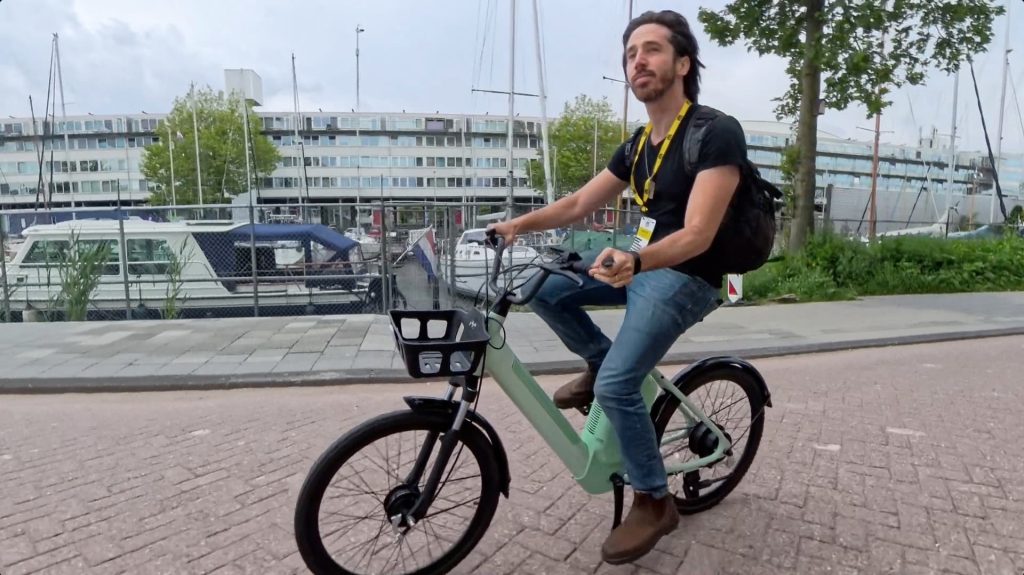
E-bikes are already prolific. Why hydrogen?
It’s true, battery-powered electric bikes are everywhere. If there was ever going to be a hydrogen vs battery e-bike war, you’d think it would be over before it even began.
So why are we even still talking about hydrogen bikes? Well, there are still a few advantages over traditional e-bikes. Almost all electric bicycles these days use lithium-ion batteries , which usually require problematic or otherwise rare materials to produce. As much as battery makers have tried to limit the amount of such minerals, we’re often still beholden to suppliers from a handful of countries using sometimes unethical means to procure the necessary materials to produce these batteries.
Hydrogen, on the other hand, can be produced in your living room or kitchen using a small hydrogen generator. Heck, you can even buy one on Amazon if you want. It still requires electricity to power the electrolysis process, meaning you’re going to lose some energy along the way due to inefficiencies in the process. But just like how a wall charger doesn’t put 100% of the electricity that flows through it into your battery, there are always inefficiencies in energy transfers. And similarly to a wall charger for a battery e-bike, Hydroride’s electrolysis machine can be solar-powered, meaning you’re effectively using free energy from the sun to produce fuel. It’s literally a “just add water” process to generate your own fuel.
Once on the bike, the ride is as zero emissions as a battery-powered bicycle. Or, almost as zero emissions, as long as you don’t count the occasional drops of pure water produced by the hydrogen fuel cell on board the bike.
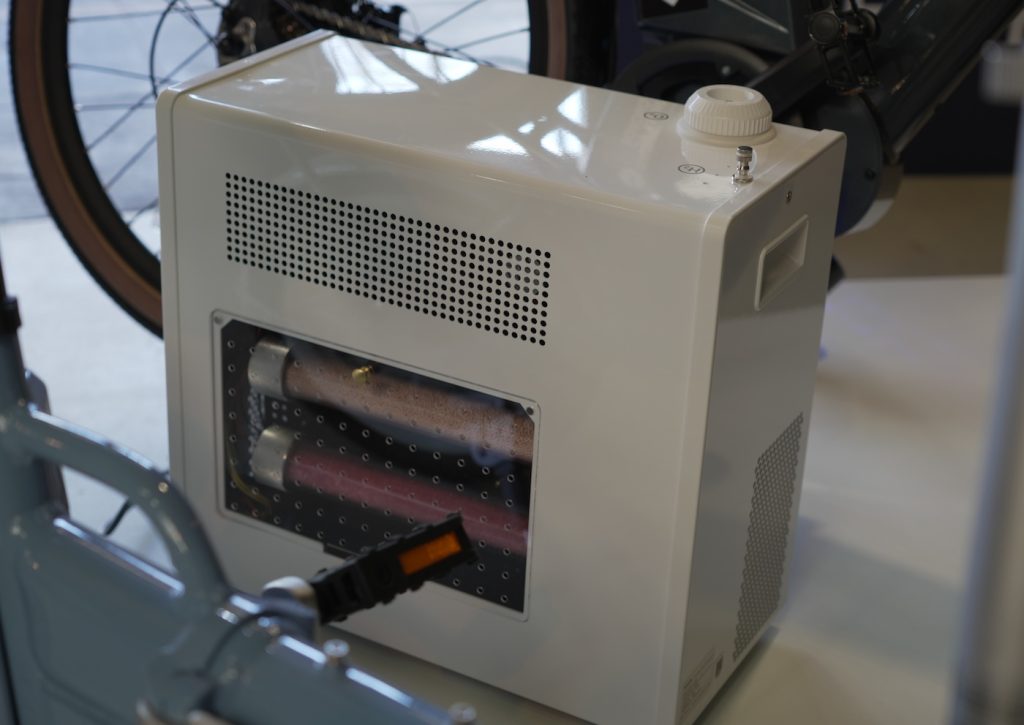
Who is this for?
It’s true, the company offers an at-home hydrogen generator and that means you could conceivably use a hydrogen bike like this as your daily rider. But as I learned at the booth, they’re more focused on B2B than B2C, with their main goal being bike and scooter sharing companies, not individual consumers like you and me.
And that makes more sense, in my opinion. Yes, I accept that hydrogen has unique advantages that batteries do not. But battery e-bikes have such a hold on the industry that I don’t see major changes coming there anytime soon.
But for sharing companies, those batteries are one of the biggest headaches of their industry. The single largest source of emissions for most scooter and bike-sharing services is the diesel-powered van that has to go around to swap batteries in these things. And so if you could fit larger hydrogen bottles on these bikes to give them more range (the small bottles already give scooters 100 km or 60 miles of range), or you could use local hydrogen generators for on-site bottle swaps, that could make a big impact.
It also removes the issue of charging hundreds of batteries at a storage depot and the resulting fire concerns related to those hundreds of batteries.
Top comment by David Brouwers
So half the range of a comparable battery electric bike whith 10x the complexity. Looks like a fun engineering project with little commercial viability.
To be fair, a quick check of the periodic table reminds me that hydrogen isn’t exactly the most inert of the gases, either. But we’ve come a long way from the days of the Hindenburg and are pretty good about safely controlling the storage and transfer of hydrogen, especially in small water bottle-sized packages.
What’s my verdict?
To be honest, I used to think hydrogen was dead on arrival for e-bikes. And I still am not very bullish on it gaining much market share. But now I at least see that it has real potential for certain specific niches.
Sharing and other fleet usage seems to be the best use case, since I don’t see it taking off for average consumers. I definitely see the advantages of hydrogen for a pizza shop with a fleet of delivery e-bikes that doesn’t want to deal with a tabletop full of charging batteries, or for a scooter sharing operation that doesn’t want the logistical nightmare of hundreds or thousands of volatile batteries in their warehouse.
But let’s just say I don’t think I’ll be riding a hydrogen-powered Trek or Gazelle bike soon.
FTC: We use income earning auto affiliate links. More.

Micah Toll is a personal electric vehicle enthusiast, battery nerd, and author of the Amazon #1 bestselling books DIY Lithium Batteries , DIY Solar Power, The Ultimate DIY Ebike Guide and The Electric Bike Manifesto .
The e-bikes that make up Micah’s current daily drivers are the $999 Lectric XP 2.0 , the $1,095 Ride1Up Roadster V2 , the $1,199 Rad Power Bikes RadMission , and the $3,299 Priority Current . But it’s a pretty evolving list these days.
You can send Micah tips at [email protected], or find him on Twitter , Instagram , or TikTok .
Micah Toll's favorite gear

Lectric XP 3.0 e-bike sale
Best $999 electric bike ever!

Rad Power Bikes sales
Great e-bikes at great prices!

Manage push notifications

- NURBURGRING WEBCAMS
- WORK FOR US

Will This As-New Hypersonic Gray Z06 Tempt You To Blow Your Budget?

GM’s American Plug-In Hybrids Won’t Arrive Until 2027

Should The VW Scirocco Return As An Electric Sports Car?
Editor's picks.

There’s A Rumor The 2025 Porsche 911 Turbo Will Be Manual And RWD, But Does It Make Any Sense?
Toyota Tests Hydrogen Hilux With Mirai Tech And 373-Mile Range
Watch prototypes of the pickup moving silently on rough terrains, as the project moves to the demonstration phase

by Thanos Pappas
- Toyota built 10 prototypes of the Hilux pickup with a Mirai-sourced FCEV powertrain.
- The system includes three hydrogen tanks, a fuel cell, a battery, and an electric motor moving the rear wheels.
- The new generation of FCEVs by Toyota is expected to hit the roads in 2026-2027, offering 20% more range at a lower cost.
Toyota has built 10 FCEV prototypes of the Hilux in Britain, moving to the demonstration phase of the project that evaluates the use of hydrogen fuel cells in a pickup. The powertrain, sourced from the Mirai , allows the Hilux to travel 600 km (373 miles) between refuelings, with zero tailpipe emissions and no reliance on the charging network.
The project was originally announced on December 2022, with the first prototype being unveiled in September 2023 . Out of the 10 prototypes built by Toyota in Derby, UK, five will go through field testing, and another five will be used for customer and media demonstrations (including the 2024 Olympic and Paralympic Games in Paris).
More: Toyota Has Developed A New Combustion Engine That Will Fend Off EVs For Years To Come
The FCEV version of the pickup looks identical to the regular model, measuring 5,325 mm long in the extra-cab bodystyle. However, everything is different under the skin, with the old diesel giving way to a cleaner a more sophisticated powertrain.
A trio of high-pressure hydrogen tanks are integrated within the ladder frame chassis, with a total capacity of 7.8 kg (17.2 lbs). Under the hood there is a 330-cell polymer electrolyte fuel cell stack which produces energy, storing it in a lithium-ion battery positioned in the rear bed.

Toyota Europe
Finally, a single rear-mounted electric motor with 180 hp (134 kW / 182 PS) and 300 Nm (221 lb-ft) of torque is driving the rear wheels. Toyota says that the lightweight powertrain allows a higher payload and towing capacity compared to a heavier fully electric truck, while offering a longer range.
The Japanese carmaker is researching scalable fuel cell stacks and various shapes of hydrogen tanks to ensure compatibility across different vehicle types. Toyota ‘s third generation of fuel cell technology, which is currently under development, is slated for application in production models by 2026 or 2027.
This new generation is expected to offer a 20 percent increase in range and reduce costs by more than a third, thanks to advancements in technology and increased production volumes.
FCEV powertrains are part of Toyota’s multi-pathway approach together with hybrids, PHEVs, BEVs, and ICE with e-fuels. The company expects Europe to be one of the largest markets for hydrogen fuel cell vehicles by 2030.

The Devolution Of Hydrogen For Energy Over 25 Years Is A Fascinating Tale
About 25 years ago, hydrogen was the solution of choice for climate-aware technocrats and politicians, and with good reason. At the time, there really wasn’t much choice in terms of low-carbon energy carriers. Batteries were good enough for laptops and phones, but clearly no one was going to be running transportation, heating or grid storage with them.
And besides, you could make hydrogen with electricity, something first done in 1800, and a staple of kids’ science classes as early as grade 4. Easy to make, high energy density and you didn’t even have to burn the stuff. You could use fuel cells, and again, those were really old technology with the first one constructed in 1842, and fuel cells used in Gemini spacecraft as far back as 1962. What’s not to love?
The mood was best captured by American economist and social theorist Jeremy Rifkin in his book The Hydrogen Economy: The Creation of the Worldwide Energy Web and the Redistribution of Power on Earth . What’s that? You didn’t remember the rest of the title? No one does.
It’s worth pointing out that Rifkin, while undoubtedly brilliant and a great thinker, has no engineering or science chops to speak of. He never did rigorous cost workups on hydrogen electrolysis facilities, renewable power and the grid costings or worked through the implications of distribution of hydrogen in any depth. He was seduced by the molecule, and was deeply influential in both Europe and America regarding it, for example getting the then President of the European Commission to commit to a multi-billion Euro research and development plan to turn Europe into a green hydrogen superpower.
Is he still as bullish on hydrogen as he was in 2002 when the book was published? Not so much. Comments in the last year have seen him retrenching to a position where only long-haul logistics see any need for hydrogen fuel cell vehicles. He hasn’t quite got the full memo yet.
Even as early as 2005 it was obvious that there were serious problems with this vision. Iceland ran three hydrogen buses for four years, funded by EU money of course to the tune of €12 million in 2023 money. Did they keep the buses on the road when the money ran out? Not a chance. Far too expensive, far too failure prone.
Has anything changed with hydrogen buses since then? Yes, there have been hydrogen bus trials on multiple continents which recreated the Icelandic experience. Lots of governmental money, very high costs to fuel, very high maintenance costs, abandonment when funding is withdrawn.
Recently I stepped through California’s more recent six years of experiences, finding that after several years of operation, their fuel cell buses cost 50% more per year to maintain than their diesel buses, and about twice as much as their battery electric buses. Further, California’s hydrogen refueling stations in the last six month for which data was collected, the first half of 2021 after years of operation when lemons should have been eliminated and maintenance optimized, were out of service 20% more hours than they were actually pumping hydrogen and were costing 30% of capital expenditures per year in maintenance , an order of magnitude above assumed costs.
Meanwhile, electric buses have taken over the world. China has approaching 700,000 on their roads, compared to a couple of thousand fuel cell buses, mostly in Foshan, a city which made an industrial and export policy choice to focus on hydrogen for transportation. Even Foshan has more battery electric buses than fuel cell ones however. Europe is buying thousands of battery electric buses annually, about a third with at least Chinese frames, drive trains, motors and batteries and often the entire bus being delivered from the other side of the world. African countries are buying thousands of electric buses, not hydrogen fuel cell buses. India has thousands on its roads already and is aiming for 50,000 by 2027.
That hasn’t stopped transit agencies, funded by governmental money at various levels, from getting into trouble by buying hydrogen buses. The latest appears to be Spain, where the five Mallorcan buses have been sitting unused and unusable because refrigerant leaked in and destroyed the fuel cells — one of many problems with hydrogen vehicles is that fuel cells demand pure hydrogen and pretty pure air and are deeply intolerant of anything else — and only four of eight Barcelona buses are operational, 18 months or so after they arrived. Despite these failures and the success of their battery electric buses, Barcelona is ordering more hydrogen lemons with EU funding.
In the 2000s, Formula Student, a global initiative where mechanical engineering students at different schools build small cars and compete on about fifteen different criteria including acceleration, handling, economic viability and the like, had a new category for zero emission vehicles. For the decade, a bunch of schools chose hydrogen and a bunch chose batteries. At the end of the decade, battery electric cars were threatening the conventional internal combustion engines. Early in the 2010s, one won overall. Last year, a battery electric entrant accelerated from zero to 100 km/h in 0.956 seconds within a distance of 12.3 meters. As of last year, there was exactly one hydrogen entrant left, and it likely won’t last.
In 2003, a couple of things are worthy of note. Amory Lovins, who did amazing work and founded the RMI, thought hydrogen was the answer, including for his Hypercar, one of his few failures of analysis, as the Hypercar was a hyperefficient hairshirt in vehicular form. Meanwhile, on the other side of the Rockies, Tesla was founded with the premise that they were going to build fully electric cars that drivers would salivate over.
The original Roadster run of 2,500 was sold out as rapidly as they could get them off the factory floor, most pre-sold in fact. The Tesla Model S’ arrival in 2012 was the death knell for the internal combustion car. Toyota clearly didn’t understand this, introducing the hydrogen-powered Mirai in 2014. Over half of the 23,000 delivered were sold in the USA, specifically in California where there were the often-not-working hydrogen refueling stations mentioned earlier. The sales of hydrogen from those stations make it clear that California’s hydrogen vehicles travel an average of 15 miles per day, well under the 37 miles per day that Americans typically drive.
Now we’re at a point where every legacy manufacturer and a bunch of new ones, especially from China but also Vietnam, have multiple electric cars in their lineups and only a couple still hold onto the clean-burning torch for hydrogen. Some, like Toyota, are leaning into hybrids, but most are going fully electric. It’s hard to find a serious analyst who thinks that there’s a place for hydrogen in light vehicles, although firms like Ballard and Plug Power continue to pretend otherwise.
One of the great hopes of gas utilities is that they would be pumping hydrogen through their pipelines into homes and buildings for heating and cooking in the coming decades. They want to start by blending hydrogen into pipelines with natural gas in what would have to be homeopathic amounts for a few obvious technical reasons. They’ve invested a lot of money into trying to convince politicians that this is a reasonable idea, when it really isn’t.
Many hydrogen enthusiasts were looking forward to continue to cook with gas, albeit with a paler blue flame. They weren’t thinking through the implications of having a gas inside their homes that is much more flammable over a much broader range of concentrations that would ignite with lower temperature sparks and that couldn’t have odorants added to it. Safety studies make it clear it’s four times more likely to cause explosions and harm than natural gas, something that destroys about 4,000 buildings a year in the USA at present.
Even hydrogen-focused Japan realized that this was foolish, hence the reason that some of the biggest heat pump companies in the world are Japanese, Mitsubishi and Daikin among them. Traveling around many parts of the world that aren’t Europe or North America, you are much more likely to find induction stove tops than anything else.
While low-carbon hydrogen would either require throwing away half of the energy in natural gas at great expense, tripling or more the cost of heat, or having green hydrogen made from low-carbon electricity at even greater expense, heat pumps get three units of heat from the environment for one unit of electricity. On average, they are four times more efficient than natural gas furnaces, lowering heating bills in many places and providing air conditioning as well. And induction stove tops heat up only the pot or pan, providing the instant heat of gas stoves with none of the risks and more efficiency than older electric stove tops.
There are now 54 independent studies which make it clear that hydrogen has no place in homes or commercial buildings. And if it has no place in buildings, there’s no future for gas utilities and there will be no convenient and inexpensive hydrogen network used for a multitude of purposes running through cities. Dreams of using that non-existent network to bring hydrogen to truck stops are just that, dreams. District heating and cooling systems that increasingly use massive ground or water source heat pumps are a much bigger growth segment.
There’s a strong trend emerging, isn’t there. That widespread hydrogen for energy economy is getting narrower and more constrained with each passing year.
We’re now at a point where there are only a few places where hope is being held out for hydrogen. While buses are an answered question where hydrogen is only being kept alive by long-running governmental bureaucracies created to dole out money for hydrogen transportation, many consider freight trucking to be an obvious fit. It’s not nearly so obvious once you start looking at the data more clearly.
There are now multiple heavy truck manufacturers delivering battery electric semi tractors, including Tesla. And, of course, Tesla’s performs far above the rest of them for a lower price point, leveraging the massive economies of scale for batteries, electric motors, power management systems and high-powered fast charging its dominance in light electric vehicles provides. It also avoided the trap other manufacturers fell into trying to economize by reusing existing semi ladder frames instead of building the vehicle from the ground up to be electric.
That’s why in September 2023’s NACFE Run on Less, the Tesla trucks were able to put in full days of work covering over 1,000 miles (1,600 km) with a couple of recharging breaks. Tesla is making the megawatt scale charging standard for its Supercharger network, and remember that in North America, Tesla’s plug is now the standard. Legacy truck manufacturers have a choice. They can either follow Tesla down the pure electric road, or continue to faff about with batteries, hydrogen or diesel in the frame optimized only for the latter energy carrier. If they persist, their trucks will be more expensive and less capable than not only Tesla’s, but also Chinese vehicles.
Recent total cost of ownership studies including the fatally flawed International Council on Clean Transportation’s November 2023 effort put every thumb on the scale possible for hydrogen trucking and still found that in every single category of trucking from lightest to heaviest, battery electric trucks have the best TCO, lower than diesel and lower than hydrogen even leaving the thumbs intact. Those studies have also been using 3% and 4% of capital expenditure for refueling stations as the annual cost of maintenance, based on guesses from the mid-2010s that became enshrined in report after report because no one bothered to look at the real maintenance data that was available from Europe and California. As noted, 30% is California’s experience, adding over US$9 per kilogram dispensed by itself.
Organizations not realizing that battery electric has already won pretend trucks can’t drive far enough or that batteries are too heavy. The ICCT again thinks batteries won’t achieve 500 watt hour per kilogram energy densities, double Tesla’s, until 2050. Meanwhile, the world’s biggest battery manufacturer, CATL, released a 500 Wh/kg battery in 2023. That enables a Tesla Semi to to travel 750 miles between recharges while weighing a lot less, or travel 1,000 miles with the same completely reasonable 2% to 3% extra weight allowance. And silicon chemistries already commercializing promise double to quintuple CATL’s energy density and hence longer ranges, lower weights or both.
I’m engaged in a review group of a total cost of ownership study for European freight trucking now, the reason I went and looked at California’s bus and refueling station maintenance. One of my comments was that certain mixes of vehicles, such as hydrogen and light vehicles, should be excluded as that debate is over, but that hydrogen for trucks should be kept in because some people refuse to accept the reality and so driving it home with another study is still useful.

And then there’s heavy rail. That question has been answered as well. Outside of North America, the world is simply getting on with electrifying the parts of the rail network that don’t already have overhead wires. India expects to be 100% electrified in 2024, leading the world. All of China’s massive and growing network of high-speed rail is electrified, as are the high-speed rail systems in Indonesia and Morocco. China is delivering freight to Europe along fully electrified rail.
And total cost of ownership studies are clear here too. Baden-Würtemberg did it right. They put a gimlet-eyed spreadsheet jockey on the job, told them to compare grid-tied, battery electric and hydrogen rail systems, and hybrids of them. The answer came back that where they couldn’t put in overhead wires because it was too expensive, mostly bridges and tunnels built without overhead wires and the lines that have a lot of them, batteries were almost as cheap as overhead wires, while hydrogen was three times as expensive. Meanwhile, next door in Lower Saxony, they took some of that lovely governmental money, about €14 million per train, to buy some hydrogen trains and a year after starting service with them announced they would not buy any hydrogen trains ever again.
The USA will get to electrifying rail too, and drag Mexico and Canada along with it into the 21st Century of rail, but not until it’s wasted as much time as possible scraping out what Wall Street analysts want to hear every three months.
Hmmm… no ground transportation demand for hydrogen. At all. And with renewables providing all of the energy, not much room at all for hydrogen in the electricity system. While it’s not on the infographic, as room did not permit, let’s talk about that. All of the coal, natural gas and oil burned for electricity today must go away if we are to solve climate change. The idea of carbon capture on power generation plants has been tried, and it’s vastly more expensive and less effective than any rational actors are willing to consider.
We’re now into the end game of a quarter century of unfortunately misguided energy policy, kicked off in large part by Rifkin’s book and proselytizing in Europe and North America.
But wait, the hydrogen advocates say. We’ll need hydrogen for electricity storage! Well, no. That’s actually a solved problem with the exception of continent-scale, weeks-long lulls in sunshine and wind which only come along every few decades. Even in the archipelago nation of the United Kingdom, modeling only finds that is a significant problem every decade or so.
For fast-response, short-duration storage, the kind that’s great for peaks and smoothing spiky power, as well as moving solar power a small handful of hours into the future, the same increasingly cheap batteries in an increasing variety of chemistries are completely adequate. For longer duration storage, the same pumped hydro that was built to give nuclear plants something to do at night and that represents 93% of grid energy storage today covers from four hours to 24 hours of storage quite easily.

China gets this. It’s built 58 GW of pumped hydro already, with probably 600 GWh to more than a TWh of energy capacity. It’s building or has in plan another 365 GW of capacity representing 4 to 8 TWh of energy storage by 2030. The rest of the world has woken up to this old solution as well. The Australia National University’s greenfield off-river, closed-loop pumped hydro atlas is undoubtedly getting a big work out. They did the study a few years ago of all locations where small area upper and lower reservoirs could be placed reasonably close together, avoiding streams and rivers, with over 400 meters of head height to provide lots of energy, near transmission and off of protected lands. A bunch of the blank areas in the map like Siberia just didn’t have any good data, but undoubtedly have lots of resources.
The ANU estimates that there are 100 times the energy storage resources available for the end state of full electrification in these identified sites, and 200 times in North America. And with HVDC transmission, storage doesn’t have to be right beside either the generation or the demand center. Hong Kong’s pumped hydro backup system of 25 GWh is a couple of hundred kilometers away in mainland China, as an example.
Then there is the emerging technology of redox flow batteries, where you can scale up big tanks of chemicals on either side of the two-way fuel-cell equivalent technology in the middle and store a lot of energy. There are a handful of commercialized solutions already and more in development.
It’s really only that 10 to 50 years dunkeflaute where inefficient, hard to store, hard to use hydrogen still has any opportunity to play, and even there, if the question is “What molecule should we store as a strategic energy reserve?” it’s hard not to find better alternatives like capturing a bunch of the methane emitted from human biomass waste in landfills and the like and put it into existing natural gas strategic reserves. You really have to start with finding a use case for hydrogen, as Sir Chris Llewellyn’s UK study that threw out pumped hydro without consideration and downplayed HVDC interconnect potential did, and then announce that green hydrogen was the answer there, so by definition it would be an answer for shorter duration storage too.
So there’s very little for hydrogen to do for energy on land, where the vast majority of energy is consumed. We’re down into the really short strokes now, with only industrial heat, maritime shipping and aviation left as potential markets.
But 45% of industrial heat is under 200° Celsius and heat pumps can do that now. There are an awful lot of organizations that should know better claiming that temperatures above 200° require something to burn, but this just isn’t the case . Resistance heating up to 600° is already commercialized. 70% of US steel comes from scrap fed through electric arc furnaces that can generate 1,500° to 3,000° heat. There are microwave, infrared and plasma solutions. There are a relatively tiny handful number of industrial heating requirements that need the characteristics of an open flame, and once again, that biological methane which is a big climate problem right now is a more reasonable choice than hard to make, hard to store, hard to distribute and expensive to use hydrogen.
But surely ships need fuel, right? Not as much as you would think. There are two 700 unit container ships running 1,000 kilometer (600 mile) routes on the Yangtze right now. There’s a 1,000 passenger cruise ship doing three hour tours in the Three Gorges. There are innumerable battery electric ferries, utility craft and tug boats already quietly churning through inland and port waters. All inland shipping and about two-thirds of short sea shipping like routes between Germany and Norway are completely viable with batteries and where something can be electrified, it will be, simply because the operational and maintenance costs are so low that they blow the rest of the total cost of ownership elements out of the water.
But that still leaves the big ships that cross the ocean . Surely hydrogen has a play there? Well, first the good news. About 55% of bulk shipping is going to diminish radically. Most of that is bulk coal, oil and gas, and that’s going away in any rational world. The rest is raw iron ore, which using green electricity and hydrogen as way to remove excess oxygen — derusting it — from the iron instead of coal will allow much more of it to be processed close to mines. Container shipping will go up, but not nearly as much as bulks go down.
Between shorter haul electrification and dropping long haul shipping, there’s not nearly as much energy required. My estimate is that about 70 million tons of diesel or equivalent will be required in 2100. And right now we already manufacture 70 million tons of biodiesel, we just waste most of it on ground transportation that will be electrifying.
This is, however, clearly a case where the maritime industry and the hydrogen for energy types have not figured out the inevitable. Organizations like the ICCT are still doing hydrogen for shipping studies, including liquid hydrogen, something so difficult to work with that the rocket industry is moving away from it to liquid methane. And the maritime industry has been seduced by ammonia and methanol lobbyists with claims that their current products are as cheap as existing maritime fuels — they aren’t —, that they are clean burning — that much is true —, that they are low-carbon — that ignores the very high upstream carbon debt of making them — and that actually low-carbon well-to-wake versions will be cheap in the future — a complete and utter shameless lie.
As a result, big shipping concerns like A.P. Moller-Maersk are wasting money on dual fuel ships that can run on methanol or ammonia , and LNG ships are a quite short-sighted growth industry. And Maersk is mostly contracting for biomethanol, not synthetic methanol, so that’s actually bad news for hydrogen advocates, not good news.The economics will play out as they play out. The International Energy Agency (IEA) chimed in with a rather stunning report in late 2023 on e-fuels . Even with their very optimistic electricity costs from completely new wind and solar farms devoted to brand new integrated industrial facilities that generated carbon dioxide in one process that was used with green hydrogen in another, green fuels were 4-6 times the cost of current maritime fuels and twice as expensive as biofuels.
I’ve done bottom up cost workups with the currently cheapest electrolyzers, standard balance of plant figures, and the cheapest, most available electricity on the planet, Quebec’s US$49 per MWh, 24/7/365, amortized hydroelectric and transmission, and come in at synthetic fuels in the same range as the IEA.
But electrolyzers are going to get cheaper, shout frustrated hydrogen proponents. It doesn’t matter. They are perhaps 8% of the cost case, so even if you make them free, synthetic fuels won’t get significantly cheaper. But electricity will be free, shout proponents. No, it still requires transmission, distribution and firming, and the organizations that make it need to make profits. There will be cheaper electricity available a portion of the time, but when capital costs are so high for e-fuels plants, they need to be operated at much higher capacity factors.
So, no hydrogen for shipping. But surely in the skies? Remember that the space industry that’s part of aerospace is trying to move away from liquid hydrogen because it’s so hard to deal with. Occasional rockets surrounded by highly trained specialists is not a replicable solution for commercial aviation. Pure hydrogen in gaseous form can’t get enough energy on board aircraft. In liquid form it requires bulbous tanks inside the fuselage with passengers who prefer temperatures about 273° warmer, and that’s in Celsius. Those bulbous tanks have to be at the back of the air craft for safety of passengers and crew, so as they empty, the plane would become nose heavy and fall out of the sky. There is no path to the certification for hydrogen aviation. Alternative aircraft designs won’t fit into any current airports. And airports would have extraordinary costs and challenges dealing with liquid hydrogen.
But the aviation industry too has not received and understood the memo on hydrogen and derivatives made from hydrogen. As a reminder, the IEA found that synthetic fuels would be a lot more expensive than current fuels. But that was in the best case scenario. The current reality is that the 25 European synthetic sustainable aviation fuel proposals haven’t been able to find any airlines willing to pay the current 10 times cost of e-kerosene . As a result, those proposals haven’t reached final investment decision, something that they share in common with virtually all green hydrogen proposals that aren’t for ammonia for fertilizers, a clear and pressing requirement for decarbonization.
So what will aircraft run on? Unsurprisingly, the airline industry is already buying millions of tons of sustainable aviation biofuels and capacity is increasing regularly. Once again, while 2 to 2.5 times more expensive than historic costs for fossil kerosene, they are half the best case costs for synthetic fuels, and a quarter of the current costs in proposals that have been rigorously costed out.
And once again, batteries are vastly more fit for purpose than the industry appears willing to admit or even realize, especially with hybrid models where divert and reserve energy can be in the form of biofuels with an onboard generator. In 2023, a hybrid aircraft flew for twelve hours before landing, and had divert and reserve left over. Heart Aerospace has hundreds of orders for its 30 passenger hybrid turboprop with 400 kilometers of usable range. Studies in 2023 started showing the reality that up to 100 passenger turboprops could have ranges of a thousand kilometers with current battery technologies.
The potential exists for ranges of 3,000 kilometers with divert and reserve provided by biofuels with silicon chemistries. Even if those chemistries only double or triple CATL’s 500 Wh/kg, vast amounts of within-continent aviation can run 99% of the time on electrons. Aviation will be slower in this model, but vastly quieter, cheaper and more efficient, so it will end up winning economically, just as with every other mode of transportation.
In my projection of aviation through 2100, with much more realistic, lower projections of aviation growth, only 110 million tons of biofuels will be required in 2100.
And to be clear, biofuels can be made from waste biomass. Every ton of dried biomass can make about 0.4 tons of biofuels. Do we have enough waste biomass? We certainly do, 2.5 billion tons of food waste alone globally, and 1.5 billion tons of livestock dung in just Europe. The first alcohol to jet fuel plant just opened in Georgia in the USA, one with a target capacity of 9 million tons a year. That alcohol is made from biomass that’s fermented and distilled from pretty much any biomass, but sourced mostly from midwestern corn at present. That an alcohol to jet fuel plant made final investment decision and no hydrogen to jet fuel plant can achieve that milestone should be a key indicator of which way the industry will go.
And so, the end of the hydrogen for energy road. It’s already lost light vehicles, with only relative fanatics pretending otherwise. Buses are a foregone conclusion. The tiny number of forklifts, 50,000 in total, are dwarfed by battery electric sales exceeding a million a year. Trucking total cost of ownership studies and tests like Run on Less make it clear that there will be no trucking hydrogen, but some people haven’t received the memo yet. Grid storage is a dead end for the molecule. And even in the two last and diminishing markets for burnable fuels, aviation and shipping, hydrogen has no real hope of being part of the solution.
Will the hydrogen for energy story end in 2024? No, of course not. 25 years of bureaucracies and reputations and investment have inertia that will keep it going long past the time when it’s obvious that the entire idea is fatally flawed in every segment it’s considered compared to alternatives that already work better, are cheaper today and will remain cheaper.
Latest CleanTechnica.TV Videos

Share this story!
Michael barnard.
is a climate futurist, strategist and author. He spends his time projecting scenarios for decarbonization 40-80 years into the future. He assists multi-billion dollar investment funds and firms, executives, Boards and startups to pick wisely today. He is founder and Chief Strategist of TFIE Strategy Inc and a member of the Advisory Board of electric aviation startup FLIMAX. He hosts the Redefining Energy - Tech podcast (https://shorturl.at/tuEF5) , a part of the award-winning Redefining Energy team.
Michael Barnard has 737 posts and counting. See all posts by Michael Barnard
Honda officially begins production of America's first hydrogen fuel cell electric vehicle
MARYSVILLE -- Honda's Performance Manufacturing Center has a reputation for building small quantities of high-performance, handmade vehicles.
Now it's become the first auto plant in America to build a fuel cell electric vehicle .
Honda on Wednesday officially began production of a hydrogen fuel cell electric version of its CR-V compact SUV at PMC, part of the automaker's goal of all of its sales coming from battery-electric and fuel cell electric vehicles by 2040 .
"This vehicle is a key part of our future. ... Our customers are waiting to see what you can do," Kensuke Oe, president and director of Honda Development & Manufacturing of America, told associates at a celebration at the plant to show off the first vehicle.
The new vehicle combines a plug-in feature with the technology of a fuel cell electric vehicle. It enables the driver to charge the onboard battery so that it can be driven as an electric vehicle around town with the flexibility of fast hydrogen refueling for longer trips.
When driven on hydrogen, the vehicle has a range of 270 miles. The vehicle can go 29 miles on EV driving.
"It operates very similar to any car you would drive," said Bill Peck, the plant's project leader.
It takes about three minutes to fill up the hydrogen tank, about the same as a vehicle that runs on gasoline. Charging the battery can take nearly two hours using a level 2 charger commonly found in many homes.
It also can be used as a clean power source source capable of running small home appliances, power tools or camping equipment.
The fuel cell system that powers the CR-V is also made in the U.S. in Brownstown, Michigan, as part of a joint venture between Honda and General Motors.
The new fuel cell system is just a third of the cost of the prior fuel cell system in the Honda Clarity Fuel Cell.
New vehicle to be available only in California at first
Initially, the vehicle will be available only for lease from 12 Honda dealerships in California later this year where there are more refueling options.
Honda has not set a price on the lease. Nor has it said how many of the vehicles it intends to make at the PMC.
Typically, technicians at the plant, which is just down the road from Honda's Marysville Auto Plant , produce a maximum of a few vehicles per day and production of the specialty vehicles made at PMC usually don't top a few hundred.
Unlike a typical automaker assembly line that is highly automated, the roughly 100 or so associates at PMC make the vehicles mostly by hand.
Since it opened in 2016, the PMC has produced multiple Acura PMC Edition vehicles, including TLX, RDX and MDX, along with Honda Performance Development race cars. One of the last vehicles that the technicians built was 350 of the NSX Type S vehicle supercar.
Even with a history of building Honda's most sophisticated vehicles, the technicians at PMC said making the CR-V fuel cell version is much more complicated.
Technicians, for example, had to take on a multiple new assembly processes to produce a vehicle that runs on a fuel cell system and a plug-in EV battery.
"It's more complex than the NSX," Peck said.
The fuel cell CR-V part of Honda's push to reduce carbon dioxide emissions
The CR-V is Honda's first all-electric vehicle following the demise of the Honda Clarity in 2021, and comes as Honda continues with its push to reduce emissions from its vehicles and manufacturing operations.
Honda is targeting 100% zero emissions sales by 2040.
Beyond fuel cell EVs, Honda recently debuted a hydrogen fuel cell truck concept and is looking at the application of its fuel cell system for equipment such as excavators and wheel loaders that make up a big chunk of the construction machinery market.
It has established Ohio as its EV hub where the company will begin production of EVs in North America.
Construction of the plant it is building in Jeffersonville , about an hour's drive southwest of Columbus, with LG Energy is expected to be completed this year and will start producing batteries for Honda EVs in 2025.
@BizMarkWilliams
share this!
April 15, 2024
This article has been reviewed according to Science X's editorial process and policies . Editors have highlighted the following attributes while ensuring the content's credibility:
fact-checked
peer-reviewed publication
trusted source
Hydrogen recombination found to be most plausible explanation for high levels of energy in stellar superflares
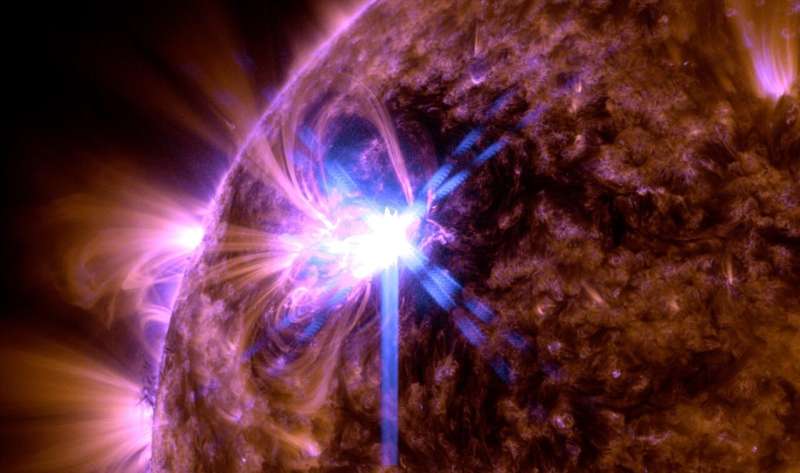
Although their primary purpose is to look for exoplanets, observatories like the Kepler Space Telescope and the Transiting Exoplanet Survey Satellite (TESS) have supplied a vast amount of data on stellar flares, detected with high-precision photometry by broadband filters in the visible light spectrum.
The stars are so far away that they appear only as points of light to these telescopes, and the phenomena interpreted as stellar flares are abrupt increases in the brightness of these points.
There is also a lack of data in other parts of the electromagnetic spectrum, and most studies of these events focus on irradiated energy. Observations have detected "superflares," huge magnetic eruptions in the atmosphere of stars with energies 100 to 10,000 times greater than the most energetic solar flares . The question is whether any of the available models can explain such high levels of energy.
Two models are available. The more popular one treats the radiation of a superflare as blackbody emission at a temperature of 10,000 Kelvin. The other associates the phenomenon with a process of ionization and recombination of hydrogen atoms.
A study conducted by researchers affiliated with the Mackenzie Center for Radio Astronomy and Astrophysics (CRAAM) at Mackenzie Presbyterian University (UPM) in Brazil and the University of Glasgow's School of Physics and Astronomy in the United Kingdom analyzed the two models.
The study is published in Monthly Notices of the Royal Astronomical Society .
"Given the known processes of energy transfer in flares, we argue that the hydrogen recombination model is physically more plausible than the blackbody model to explain the origin of the broadband optical emission from flares," said Paulo Simões, first author of the article and a professor at UPM.
The researchers analyzed 37 superflares on the binary star system Kepler-411 and five superflares on the star Kepler-396, using the two models. "We concluded that estimates for total flare energy based on the hydrogen recombination model are about an order of magnitude lower than the values obtained using the blackbody radiation model, and are a better fit to the known flare processes," Simões said.
These processes are described in terms of solar flares. Despite many differences, solar flares continue to inform the models on which stellar flares are interpreted. A huge amount of information has been accumulated on solar flares, first documented in the astronomical literature by two English astronomers, Richard Carington and Richard Hodgson, who independently observed the same solar flare on September 1, 1859.
"Since then, solar flares have been observed with intense brightness lasting seconds to hours and at different wavelengths, from radio waves and visible light to ultraviolet and X-rays. Solar flares are among the most energetic phenomena in our solar system and can affect satellite operations, radio communications , power grids, and navigation and GPS systems, to take just a few examples," said Alexandre Araújo, Ph.D. candidate at CRAAM, schoolteacher and co-author of the article.
Solar flares occur in active regions associated with intense magnetic fields, where abundant amounts of energy are abruptly released in the corona (the sun's outermost layer) by reconnection of the magnetic field, heating the plasma and accelerating electrons and ions, among other particles.
"Because they have less mass, electrons can be accelerated to a large fraction of the speed of light, typically about 30% but sometimes more. The accelerated particles travel along the magnetic field lines , and some are ejected into interplanetary space while others go in the opposite direction into the chromosphere, the layer below the corona, where they collide with the high-density plasma and their energy is transferred to the medium.
"The surplus energy heats the local plasma, causing ionization and excitation of the atoms, and consequently producing radiation, which we can detect with telescopes on Earth's surface and in space," Simões explained.
Since the 1960s, many observational and theoretical studies have attempted to explain the exceptionally large amount of visible light emitted by solar flares, but a definitive solution has not been found to date. The most popular explanations produced by these studies are blackbody radiation from heating of the photosphere, the layer below the chromosphere, and hydrogen recombination radiation in the chromosphere. This recombination occurs when protons and electrons separated by ionization reunite to form hydrogen atoms.
"The limitation of the first case can be summed up as a matter of energy transport: none of the energy transport mechanisms normally accepted for solar flares has the capacity to deliver the energy required in the photosphere to cause sufficient plasma heating to explain the observations," Simões said.
Araújo agreed and said, "Calculations first performed in the 1970s and later confirmed by computer simulations show that most of the electrons accelerated in solar flares fail to cross the chromosphere and enter the photosphere. The blackbody model as an explanation of white light in solar flares is therefore incompatible with the main energy transport process accepted for solar flares."
As for the hydrogen recombination radiation model, it is more consistent from the physical standpoint but unfortunately cannot yet be confirmed by observations, the researchers conclude, although the article provides additional arguments in favor of this model, which has been neglected in most studies.
Journal information: Monthly Notices of the Royal Astronomical Society
Provided by FAPESP
Explore further
Feedback to editors

Webb Telescope reveals asteroid collision in neighboring star system
22 minutes ago

Galactic bloodlines: Many nearby star clusters originate from only three 'families'
47 minutes ago

Interventions against misinformation also increase skepticism toward reliable sources, finds study
51 minutes ago

Researchers demonstrate new way to 'squeeze' infrared light

Elephants have names for each other like people do, new study shows

First detection of frost on the solar system's tallest volcanoes on Mars

Novel genetic clock discovers oldest known marine plant: Seagrass clone in the Baltic sea is more than 1,400 years old

Spliceosomes: New technique tracks proteins involved in RNA splicing
2 hours ago

Compressed titanium and sulfur nanoribbons can transmit electricity without energy loss, scientists find

Protein study could help researchers develop new antibiotics
Relevant physicsforums posts, unknown radio signal from space repeats every hour -- usually.
8 hours ago
Dark Energy: Are We All Missing The Obvious?
20 hours ago
Our Beautiful Universe - Photos and Videos
Jun 8, 2024
Solar Activity and Space Weather Update thread
Will we ever communicate with extraterrestial life in a reasonable time frame, how 'messy' are fusion reaction chains in stars.
Jun 6, 2024
More from Astronomy and Astrophysics
Related Stories

Temperature of solar flares helps understand nature of solar plasma
May 16, 2023

Strong solar flare erupts from sun
Jan 3, 2024

Physics behind unusual behavior of stars' super flares discovered
Dec 6, 2023

The hottest catalog of the year: the most comprehensive list of slow-building solar flares yet
Jan 31, 2024

Sun releases moderate solar flare
May 4, 2022

Sun releases strong solar flare
Jul 3, 2023
Recommended for you

Astronomers observe giant outburst of a distant X-ray binary
3 hours ago

Astrophysicists calculate the likelihood that Earth was exposed to cold harsh interstellar clouds 2 million years ago
6 hours ago

Star cluster shines in new look from NASA's Chandra

Entangled neutrinos may lead to heavier element formation

Researcher suggests that gravity can exist without mass, mitigating the need for hypothetical dark matter
Jun 7, 2024
Let us know if there is a problem with our content
Use this form if you have come across a typo, inaccuracy or would like to send an edit request for the content on this page. For general inquiries, please use our contact form . For general feedback, use the public comments section below (please adhere to guidelines ).
Please select the most appropriate category to facilitate processing of your request
Thank you for taking time to provide your feedback to the editors.
Your feedback is important to us. However, we do not guarantee individual replies due to the high volume of messages.
E-mail the story
Your email address is used only to let the recipient know who sent the email. Neither your address nor the recipient's address will be used for any other purpose. The information you enter will appear in your e-mail message and is not retained by Phys.org in any form.
Newsletter sign up
Get weekly and/or daily updates delivered to your inbox. You can unsubscribe at any time and we'll never share your details to third parties.
More information Privacy policy
Donate and enjoy an ad-free experience
We keep our content available to everyone. Consider supporting Science X's mission by getting a premium account.
E-mail newsletter
- Our Analysts
- Free Reports
- Newsletters
- My Services
- Portfolio Tracker
- Manage Account
If You Can Only Buy One Hydrogen Stock in May, It Better Be One of These 3 Names
Here are just a few of the top hydrogen stocks to buy and hold today
Advertisement
- Here are just a few top hydrogen stocks to consider now.
- Linde ( LIN ): About seven analysts have a buy rating on the LIN stock, with an average price target of $492.30.
- Air Products and Chemicals ( APD ): With a yield of 2.75%, a good number of analysts are also bullish on the stock.
- Plug Power ( PLUG ): PLUG just received a $1.66 billion commitment for a loan guarantee from the U.S. Department of Energy.
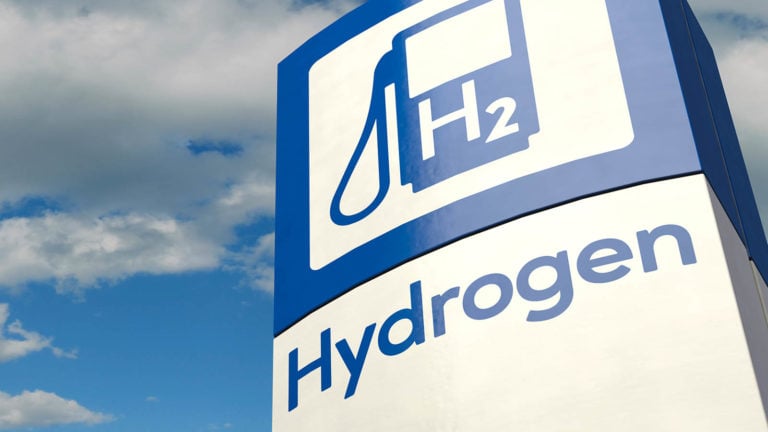
Source: DesignRage / Shutterstock.com
There’s substantial opportunity in knowing which hydrogen stocks to buy. Unfortunately, two roadblocks need to be removed before the industry, and related stocks push higher. For one, we’re still waiting to see what happens with the restrictive 45V hydrogen tax credits. Remember, as I noted on May 3 , Ernest Moniz, a former energy secretary, “said recently that the guidance presented by the IRS was too narrow and could slow the industry’s growth if not changed.”
Two, President Joe Biden’s administration faces a transport issue. At the moment, there’s a severe lack of regulations to transport hydrogen, which slows progress even further. As it stands now, “no federal agency has authority to issue permits for interstate clean hydrogen pipelines. Many states also don’t have rules outlining who can issue permits for moving hydrogen within their borders,” says E&E News .
However, while we wait for progress, we can use excessive pessimism as an opportunity, as Sir John Templeton would often say.
Linde (LIN)
Just a few days ago , I noted, “At $432.42, Linde (NASDAQ: LIN ) is an oversold bargain. In addition, analysts at Mizuho raised its price target on LIN to $512, with a buy rating. BMO Capital also raised its price target to $510 a share.” Shortly after, LIN would rally to $437.52.
From here, I’d still like to see it initially refill its bearish gap at around $445. Better, while we wait, we can collect its yield of 1.28%. Most recently, LIN declared a quarterly dividend of $1.39, payable on June 18 to shareholders of record as of June 4.
Plus, as noted by CNBC , “We’re seizing on the weakness in Linde’s stock Thursday. Nothing in the report, including the subdued guidance, shakes our belief that this is among the high-quality companies around.”
Helping this sentiment, about seven analysts have a buy rating on the LIN stock, with an average price target of $492.30, representing a potential upside of about 13% and making it very competitive among hydrogen stocks to buy.
Air Products and Chemicals (APD)
The last time I mentioned Air Products and Chemicals (NYSE: APD ) was about a week ago.
At the time, I said, “I’d like to see APD refill its bearish gap around $260 initially. From there, it could easily test $272 as the hydrogen story gains momentum. Plus, as we wait for the stock to recover more lost ground, we can collect its dividend of $1.77.”
It traded at around $230 then. Today, it’s up to $264.46 and it’s still cheap. It also just refilled its bearish gap. From here, I’d like to see it test $270 next.
With a yield of 2.75%, a good number of analysts are also bullish on the stock. Bank of America, for example, just raised its price target to $275 from $272, with a buy rating. BMO Capital raised its price target to $263 with an outperform rating. And TD Cowen just raised its target on APD to $320, with a buy rating as well.
Plug Power (PLUG)
The last time I mentioned Plug Power (NASDAQ: PLUG ) was on May 3 .
At the time, I said the stock was no longer a “going concern,” adding that it was seeing substantial advancements with its plants in Georgia and Tennessee.
Shortly after, PLUG would nail a high of $4.89. Now at $3.25, PLUG still looks like a solid bet. All thanks to a recent $1.66 billion commitment for a loan guarantee from the U.S. Department of Energy.
Still, one of the top hydrogen stocks to buy, Plug Power also just struck a deal with Allied Green Ammonia in Australia.
According to CEO Andy Marsh, “Moving this major green hydrogen-to-ammonia project to the BEDP phase is a sign of its maturity in the development process […] In total, we now have 7.5 GW of BEDP contracts globally to support our growth targets,” as noted by Investorplace contributor William White .
From its current price of $3.25, I’d like to see PLUG initially retest $4.89 again shortly.
On the date of publication, Ian Cooper did not hold (either directly or indirectly) any positions in the securities mentioned. The opinions expressed in this article are those of the writer, subject to the InvestorPlace.com Publishing Guidelines .
Ian Cooper, a contributor to InvestorPlace.com, has been analyzing stocks and options for web-based advisories since 1999.
Energy , Hydrogen , Renewable Energy
Article printed from InvestorPlace Media, https://investorplace.com/2024/05/if-you-can-only-buy-one-hydrogen-stock-in-may-it-better-be-one-of-these-3-names/.
©2024 InvestorPlace Media, LLC
Subscriber Sign in
Not Yet a Premium Subscriber?

IMAGES
VIDEO
COMMENTS
This year, for the first time, Hydrogen Europe and Tech Tour organised our first-ever European Hydrogen Financing Forum 2022 (EH2FF). The Forum featured multiple rounds of live and online sessions where key players along the hydrogen value chain get access to 60+ of the most ambitious hydrogen projects seeking strategic funding and partnerships.We are proud to announce the winners from one of ...
🚀 Calling all visionary entrepreneurs! 🌟 We are excited to announce the 4th edition of Tech Tour South East, taking place on October 22-23, 2024, in the vibrant city of Athens, Greece!
Hydrogen Landing Programme. 28 - 29 November 2019 Rotterdam , Netherlands. See details; Past Events. Tech Tour Energy Transition 2019. ... Danish & Southern Sweden Tech Tour 2009. 25 - 27 August 2009 Copenhagen / Lund / Malmoe, Denmark. See details; Past Events. French Tech Tour 2009. 01 - 03 July 2009 Paris / Strasbourg, France. See details;
🌍🚀 The European Hydrogen Tech25 List has just been announced by Tech Tour and Hydrogen Europe! 🎉 The European Hydrogen Tech25 List, unveiled today in Brussels during the European Hydrogen ...
techtour.com
We are delighted to present you the European Hydrogen Investment Summit that is going to take place in Antwerp, Belgium (Flanders region) on 22-23 June 2022 with an inspiring live event and additional online sessions and activities.. The Summit is part of the European Hydrogen Financing Forum 2022 (EH2FF) and its strategy and selection rounds will bring together the most active governmental ...
Tech Tour's Post Tech Tour 10,468 followers ... The World Electrolysis Congress returns as the industry's premier event dedicated to electrolyser technology for clean hydrogen production. Over ...
Hydrogenious LOHC Technologies, the German pioneer in storing and transporting hydrogen in Liquid Organic Hydrogen Carriers (LOHC), has been named on the Tech Tour Growth 50. This prospect list of Europe's future unicorns spotlights the European tech companies with the biggest growth potential.
#hydrogen: Thrilled to share that Tech Tour and Hydrogen Europe are teaming up to present the inaugural European Hydrogen Valleys 2024 Programme, happening in…
Plagazi Nominated As One Of The 25 Most Promising Hydrogen Companies In Europe (Tech25) By Hydrogen Europe And Tech Tour. Due to our promising developments, Plagazi has been nominated as one of the 25 most promising hydrogen production companies in Europe, and once again been invited to the European Hydrogen Week to participate and present our unique and sustainable approach to hydrogen ...
Tech Tour is an event and networking organisation with a multi-sector focus, the largest of which is the sustainability sector. They are an organisation which focuses more exclusively on financing and investment networking opportunities and events, and have connected companies and investors to enable €20.7 billion in investments over the past ...
The technology is virtually already in place for hydrogen combustion engines, and both the driving ranges and refilling times are similar to that of traditional gasoline-powered combustion engines ...
Yara's CEO and President, Svein Tore Holsether and Norwegian Prime Minister, Jonas Gahr Støre Official tour of the newly opened renewable hydrogen plant Yara's hydrogen treatment plant Yara's ...
Hydrogen can power corporate fleets and industrial processes—from steel mills to breweries. "We are truly committed to the Paris Agreement," says the Volvo Group's chief technology officer ...
Hydrogen is the simplest chemical element, or type of atom. It consists of just one proton and one electron. It is also the most abundant element, making up around 75% of the known matter in the universe. Vast amounts of hydrogen exist in water and living things. An abundance of hydrogen exists within the water on our planet, and it is ...
Photocatalytic solar hydrogen generation, encompassing both overall water splitting and organic reforming, presents a promising avenue for green hydrogen production. This technology holds the potential for reduced capital costs in comparison to competing methods like photovoltaic-electrocatalysis and photoelectrocatalysis, owing to its ...
And similarly to a wall charger for a battery e-bike, Hydroride's electrolysis machine can be solar-powered, meaning you're effectively using free energy from the sun to produce fuel. It's ...
June 7, 2024 at 17:55. 4. Toyota built 10 prototypes of the Hilux pickup with a Mirai-sourced FCEV powertrain. The system includes three hydrogen tanks, a fuel cell, a battery, and an electric ...
Hydrogen consumption currently only equates to about 2% of total global energy demand, according to S&P Global data. Most of the recent focus has been on green hydrogen, the cleanest form, and ...
Early in the 2010s, one won overall. Last year, a battery electric entrant accelerated from zero to 100 km/h in 0.956 seconds within a distance of 12.3 meters. As of last year, there was exactly ...
June 10, 2024. Today, Yara International is officially opening its renewable hydrogen plant at Herøya, Norway. Yara is now producing renewable hydrogen and ammonia and has already delivered the first tonnes of fertilizers made from renewable ammonia produced at this plant. "This is a major milestone for Yara and for the decarbonization of the ...
Honda is targeting 100% zero emissions sales by 2040. Beyond fuel cell EVs, Honda recently debuted a hydrogen fuel cell truck concept and is looking at the application of its fuel cell system for ...
The most popular explanations produced by these studies are blackbody radiation from heating of the photosphere, the layer below the chromosphere, and hydrogen recombination radiation in the ...
Here are just a few top hydrogen stocks to consider now. Linde (): About seven analysts have a buy rating on the LIN stock, with an average price target of $492.30.; Air Products and Chemicals ...